





HIGH FIDELITY
PERSONAL AUDIO & STEREO MAGAZINE

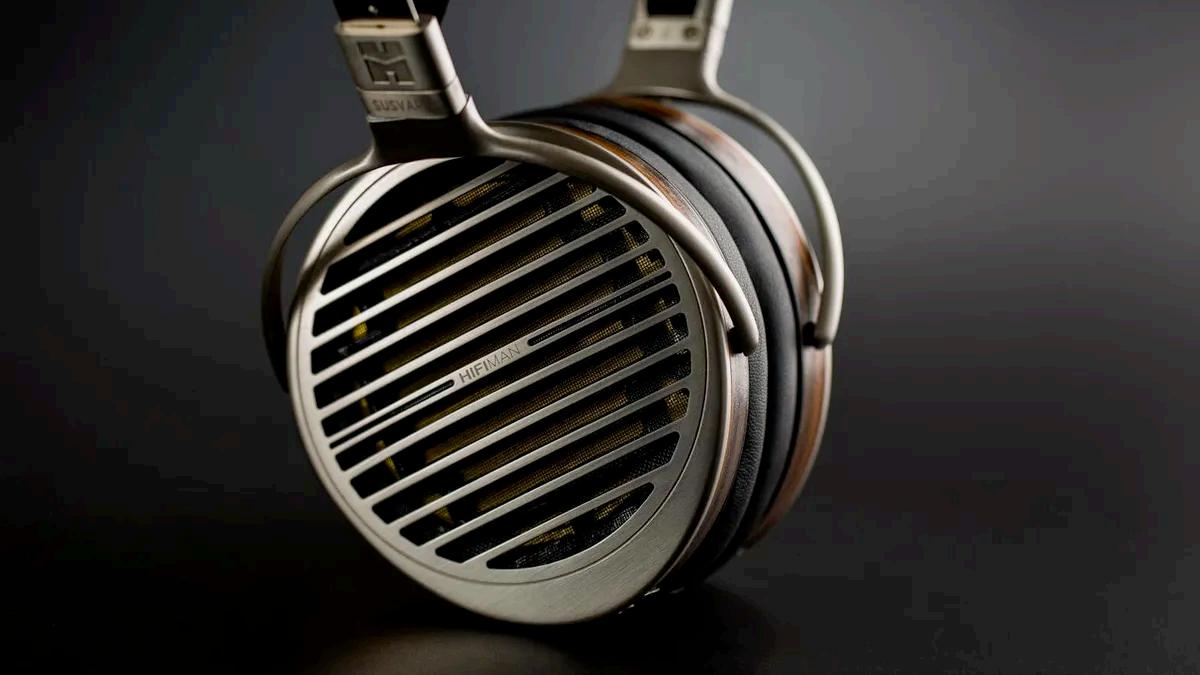
SUSVARA
HEADPHONES

IDEON
3R MASTER TIME RECLOCKER

ACCUSTIC ARTS PLAYER II
CD PLAYER
GESHELLI LABS
HPA & DAC
AND MORE…

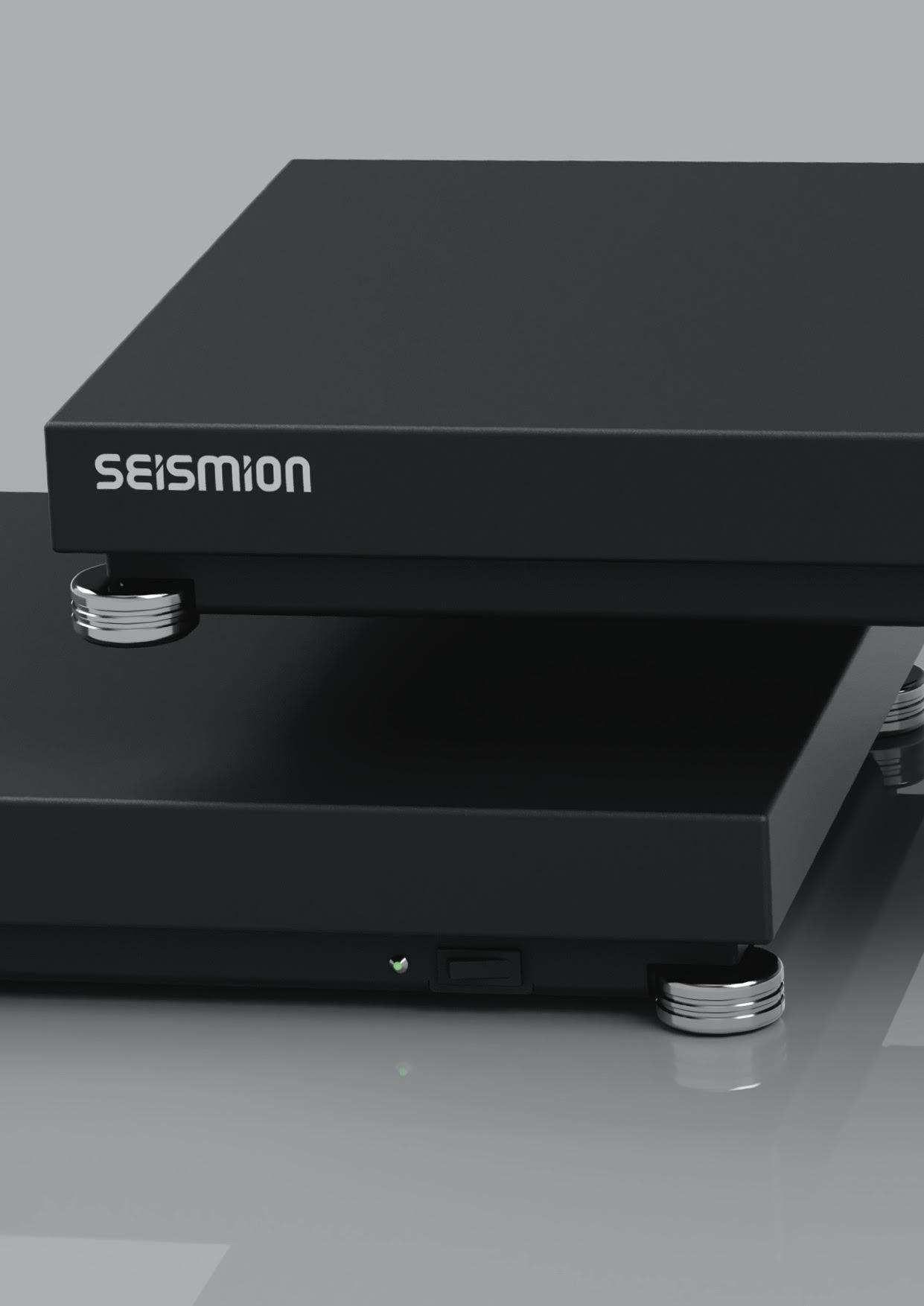






Music is art, art is music.
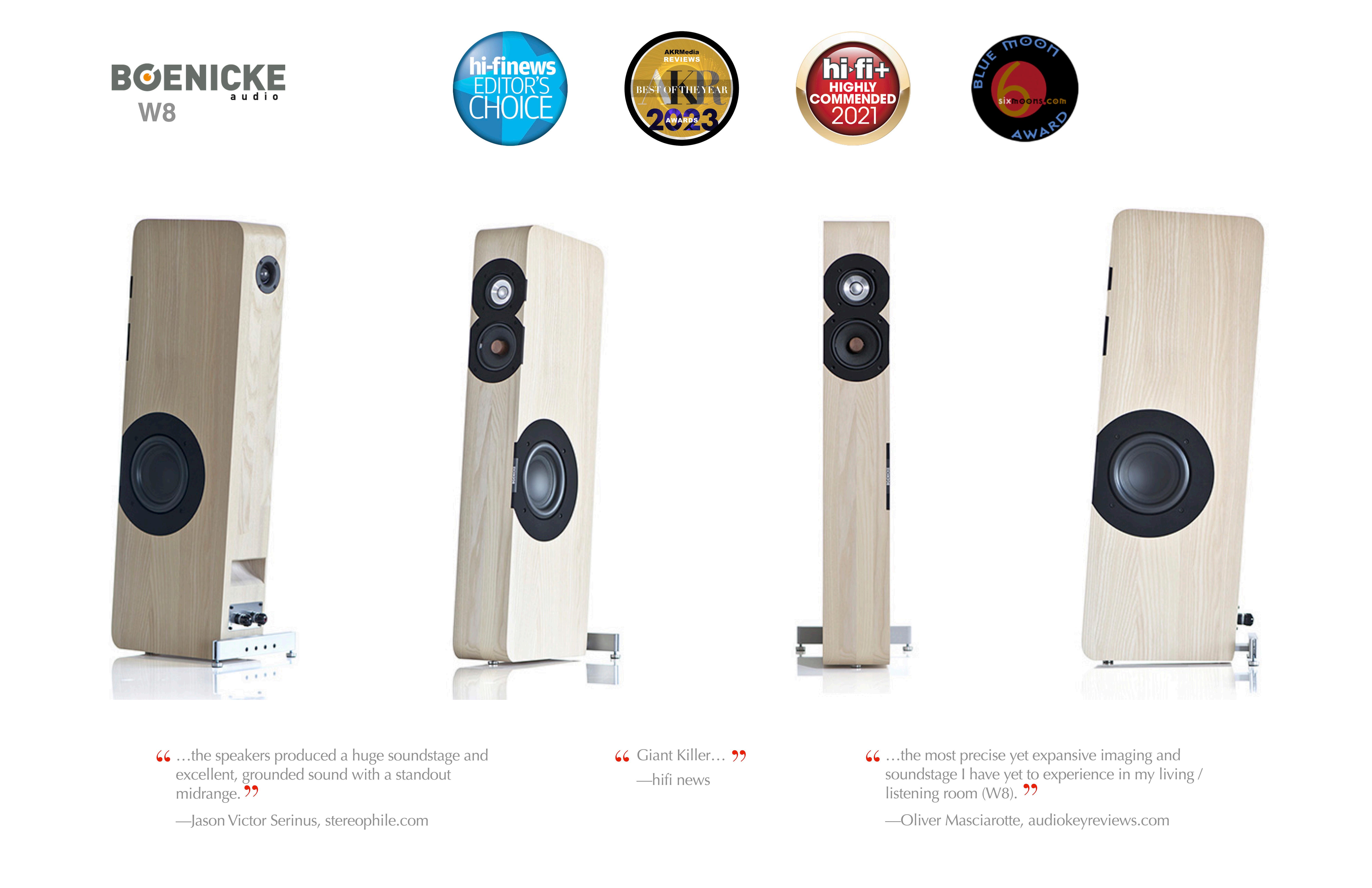






 Wassily Kandinsky - Opere
Wassily Kandinsky - Opere

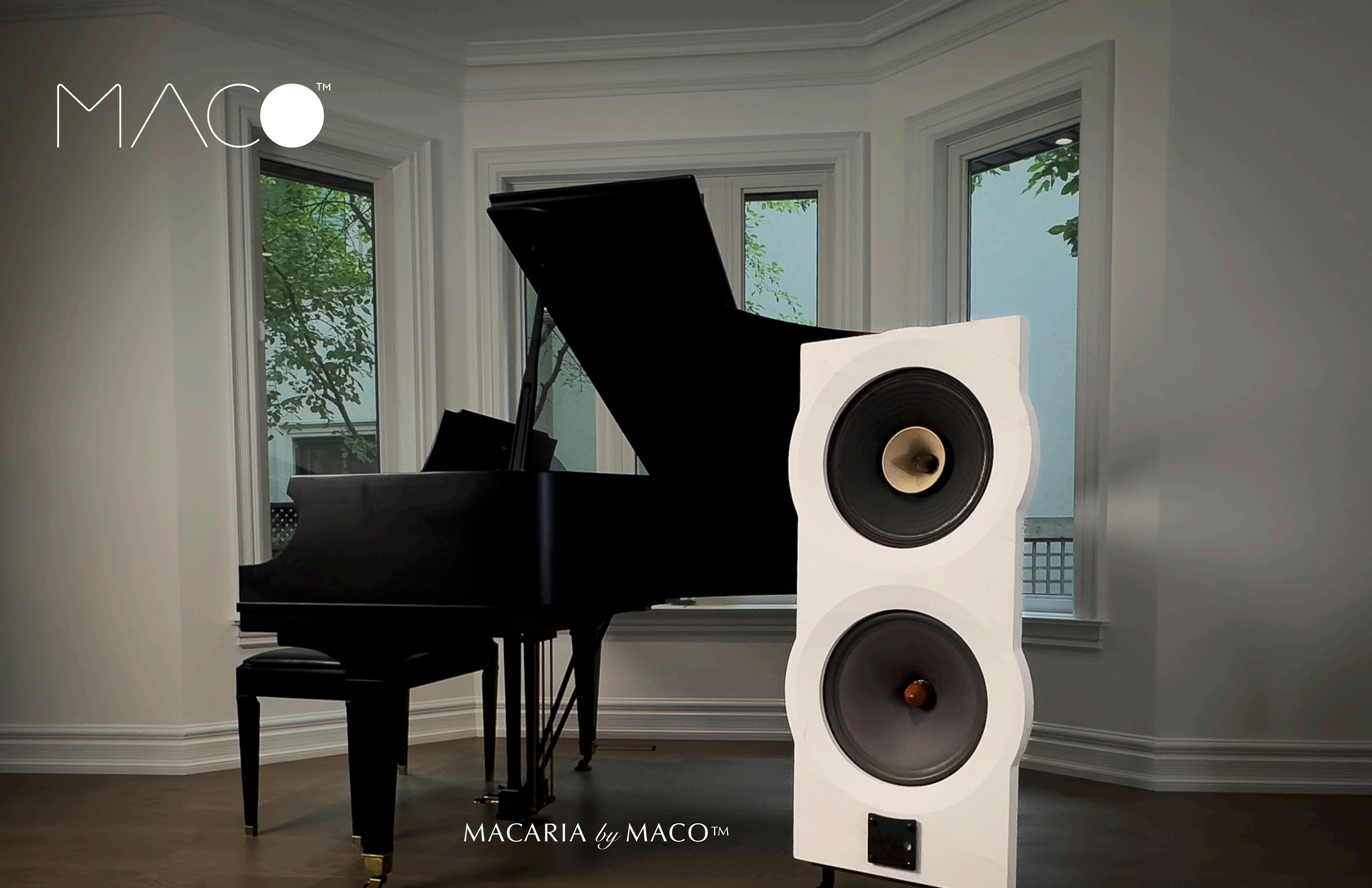



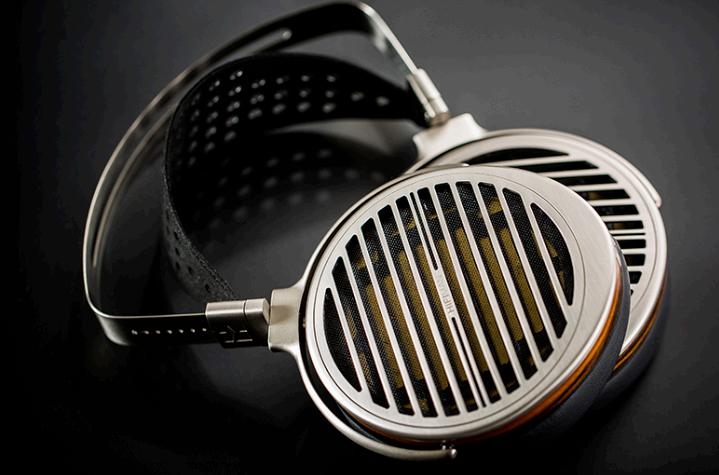
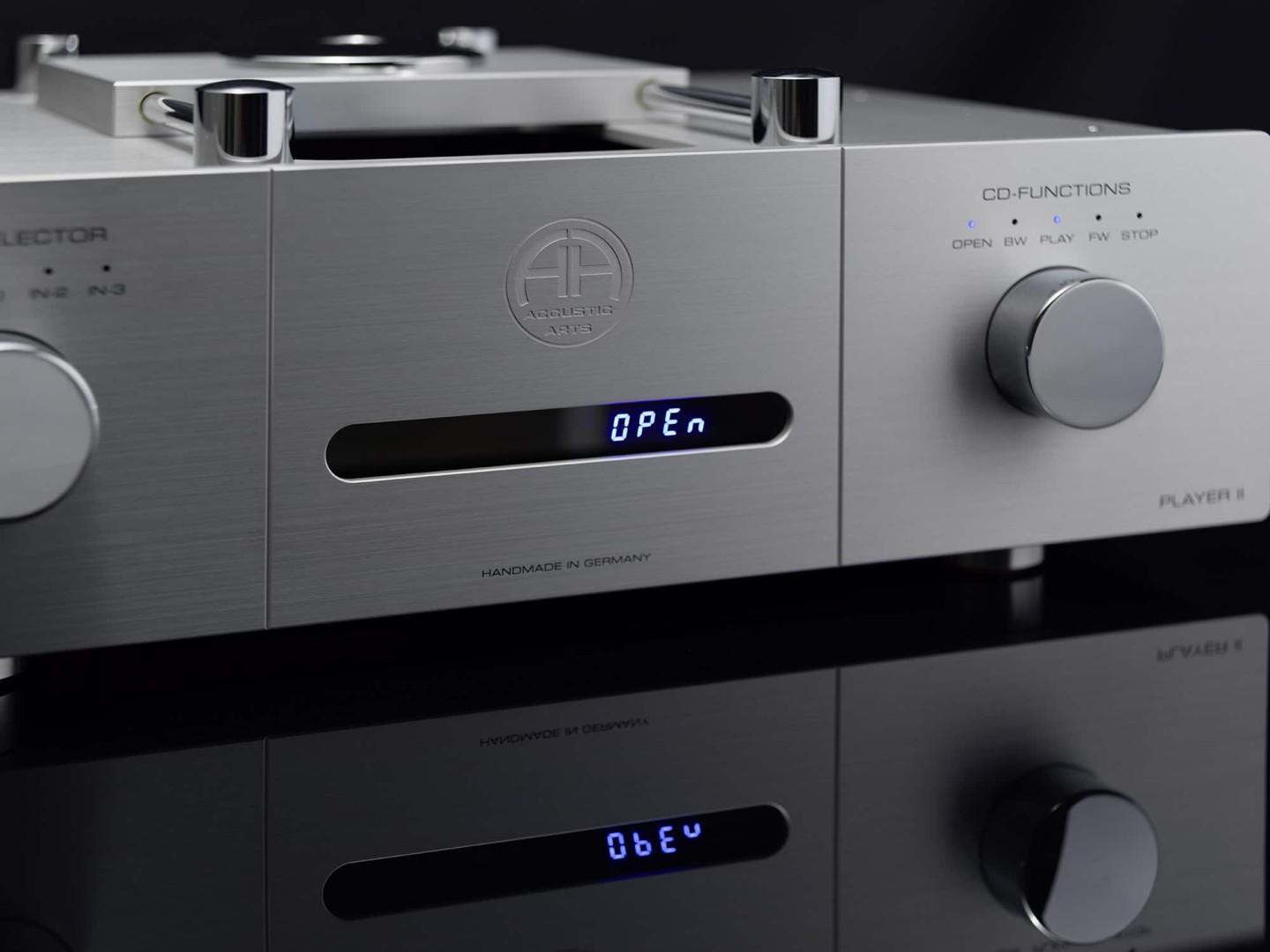

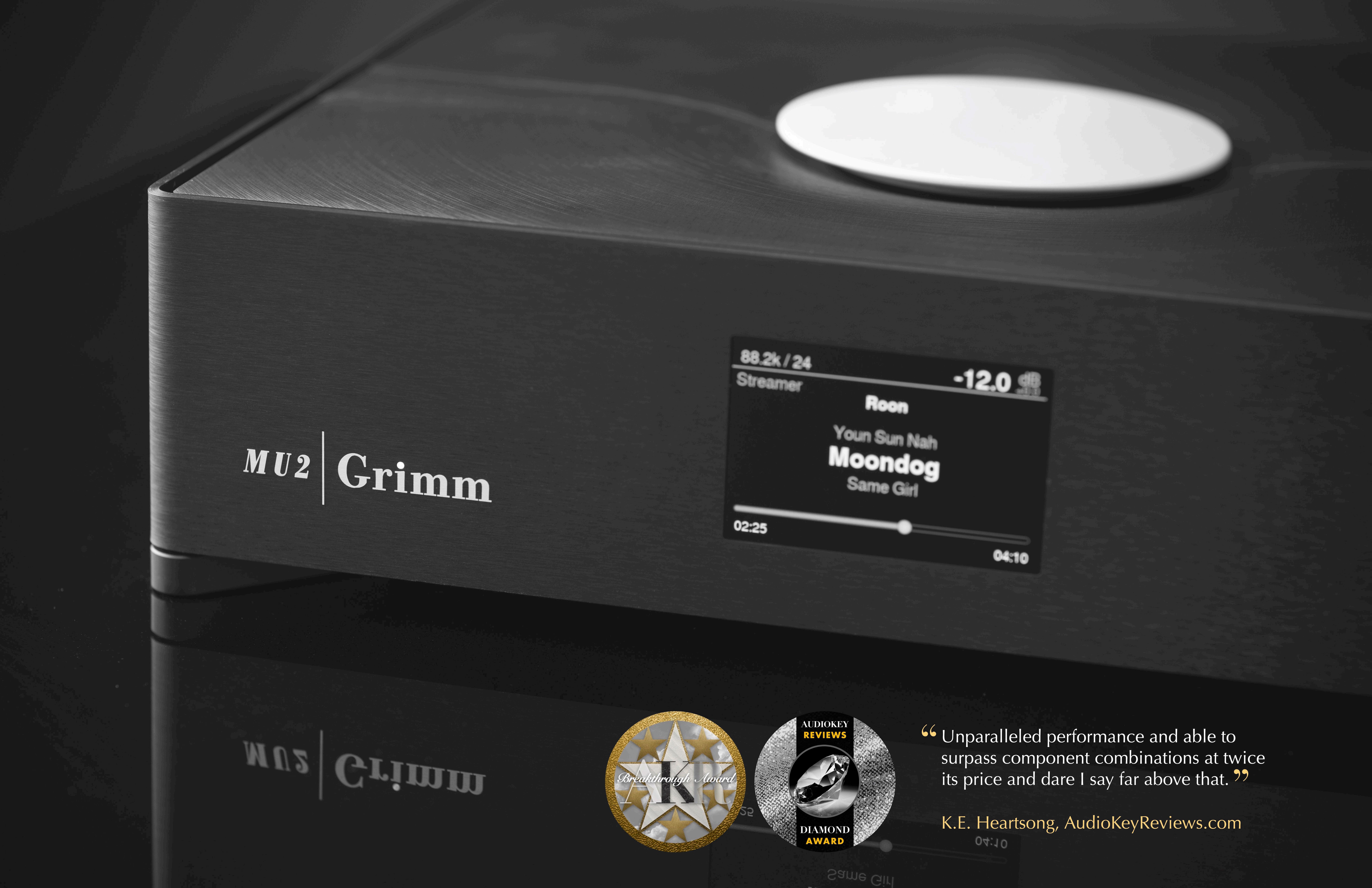


Front Inside Cover: Vincent Van Gogh, Trunk of an Old Yew Tree, 1888
Back Inside Cover: Wassily Kandinsky - Murnau Houses in the Obermarkt
The Other Art. It is my belief that the artist and the musician are not only creatives, but they access heart and soul and experience, perhaps, in the selfsame ways. My own love for art and music are inseparable. And so art, music, and those things which facilitate the music, shall share theses pages. LETTERS


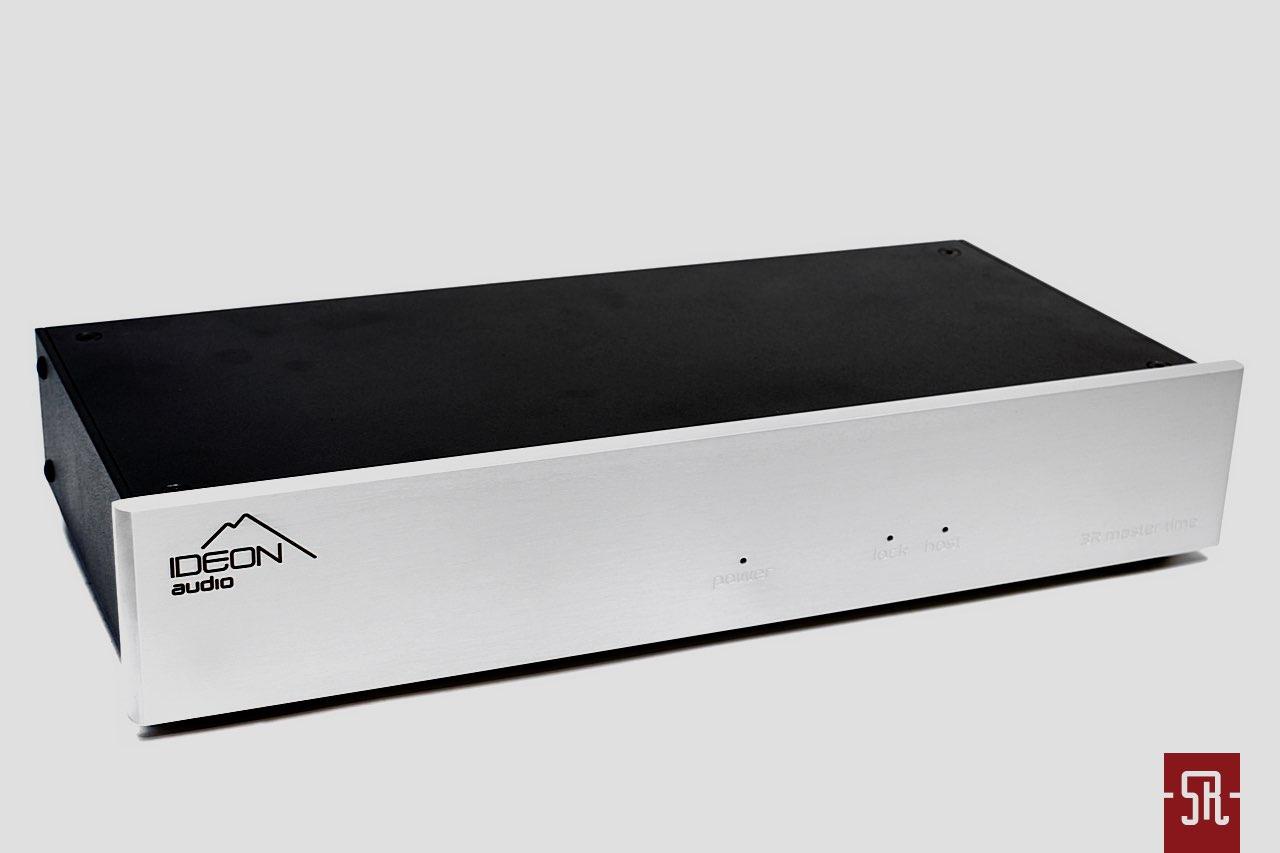
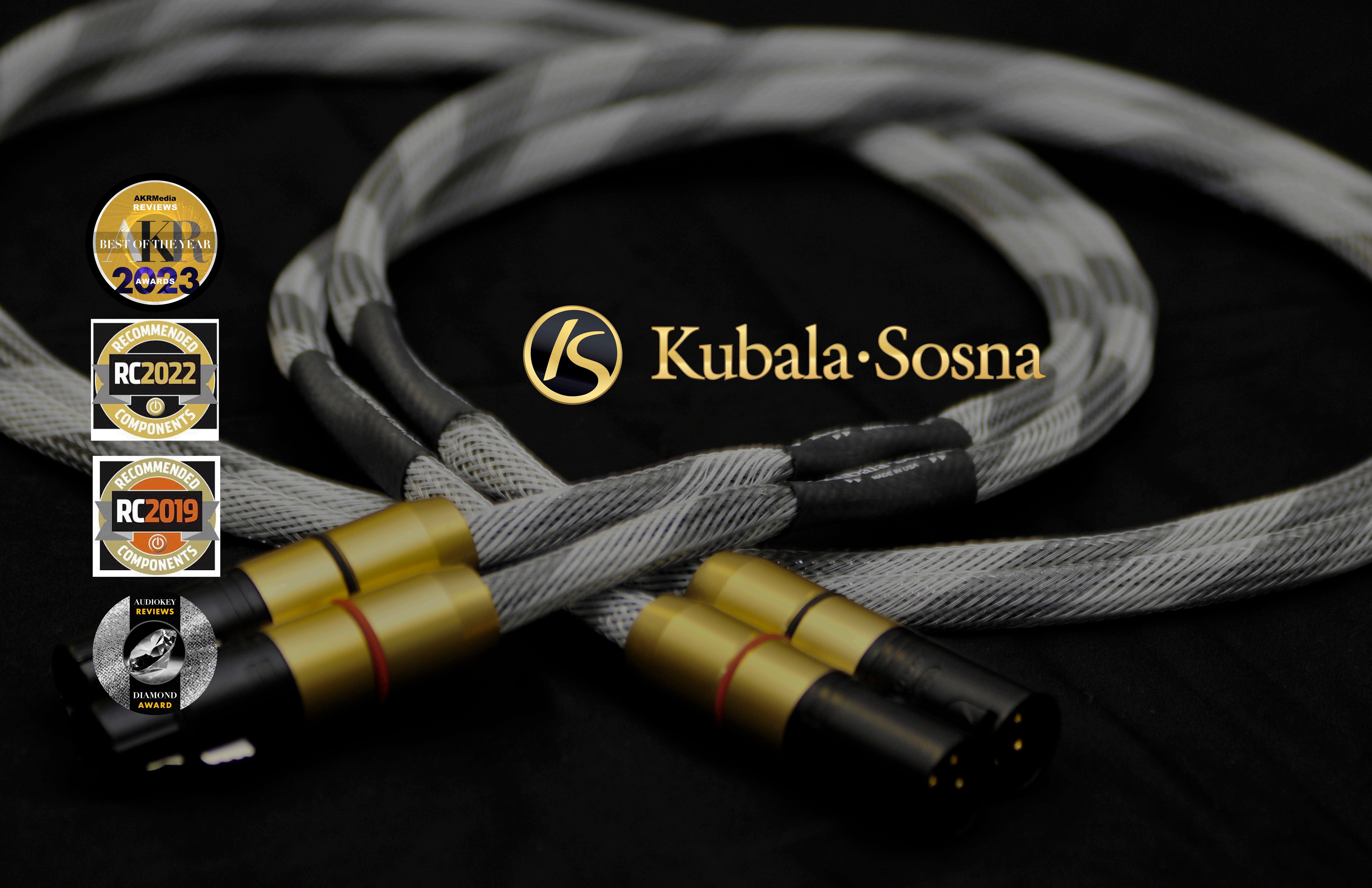
“
There was more “there, there” with the Kubala Sosna cable loom and in every respect, than any other cable heard to date.
”
K. E. Heartsong AudioKeyReviews.com
“ The Kubala-Sosna Emotion interconnects connected me to the music like no other interconnects I've heard, at anywhere near the price.
Robert H. Levi Positive Feedback Online
” “ ”
The Expressions present music without noticeable boundaries to a stage; sound stages don't erupt from a black background, but from an invisible and expanding one… Larry Cox
Positive Feedback Online
 Vincent VanGogh - Poppies, Daisies, 1890
Vincent VanGogh - Poppies, Daisies, 1890


Welcome to another issue of AudioKeyREVIEWS! Magazine.
It has been quite the ride as we rose to 22 million views in 2022 and 25 million views in 2023. What 2024 holds is truly anyone’s guess, though we will be pushing mightily for even more views and more exposure than we received last year in the US, Canada, and the world at large.
In this issue, we review products both new and established, regardless of how long they have been on the market; good or even great products from manufacturers who hold to high fidelity and musicality first and foremost. Further, there may well be a generation or two not familiar with a long-ago reviewed product, which may turn out to be beautifully synergistic with their musical and high fidelity needs.
And we continue along our course with regard to publishing reviews of good to exceptional products that speak to the best in high fidelity, while sending lesser products back to their manufacturers unreviewed and thereafter unmentioned, as there is no reason to write a bad review.
In the US issue of AudioKeyREVIEWS! our illustrious editor Raine Jordan travels to Bar Shuri, the first HiFi Bar in the San Francisco Bay Area. And in the Canadian issue, Kathe Lieber writes about Joni Mitchell and her incredible career.
Sincerely,
K.E. Heartsong Editor-in-ChiefPublisher/Editor-in-Chief
K. E. Heartsong
Managing Editor
Kathe Lieber
Senior Editor(s)
Andre Marc
Gérard Rejskind - RIP Reviewer
Oliver Masciarotte
Andre Marc Columnists
Kathe Lieber
Gérard Rejskind



 HermanMiller
HermanMiller
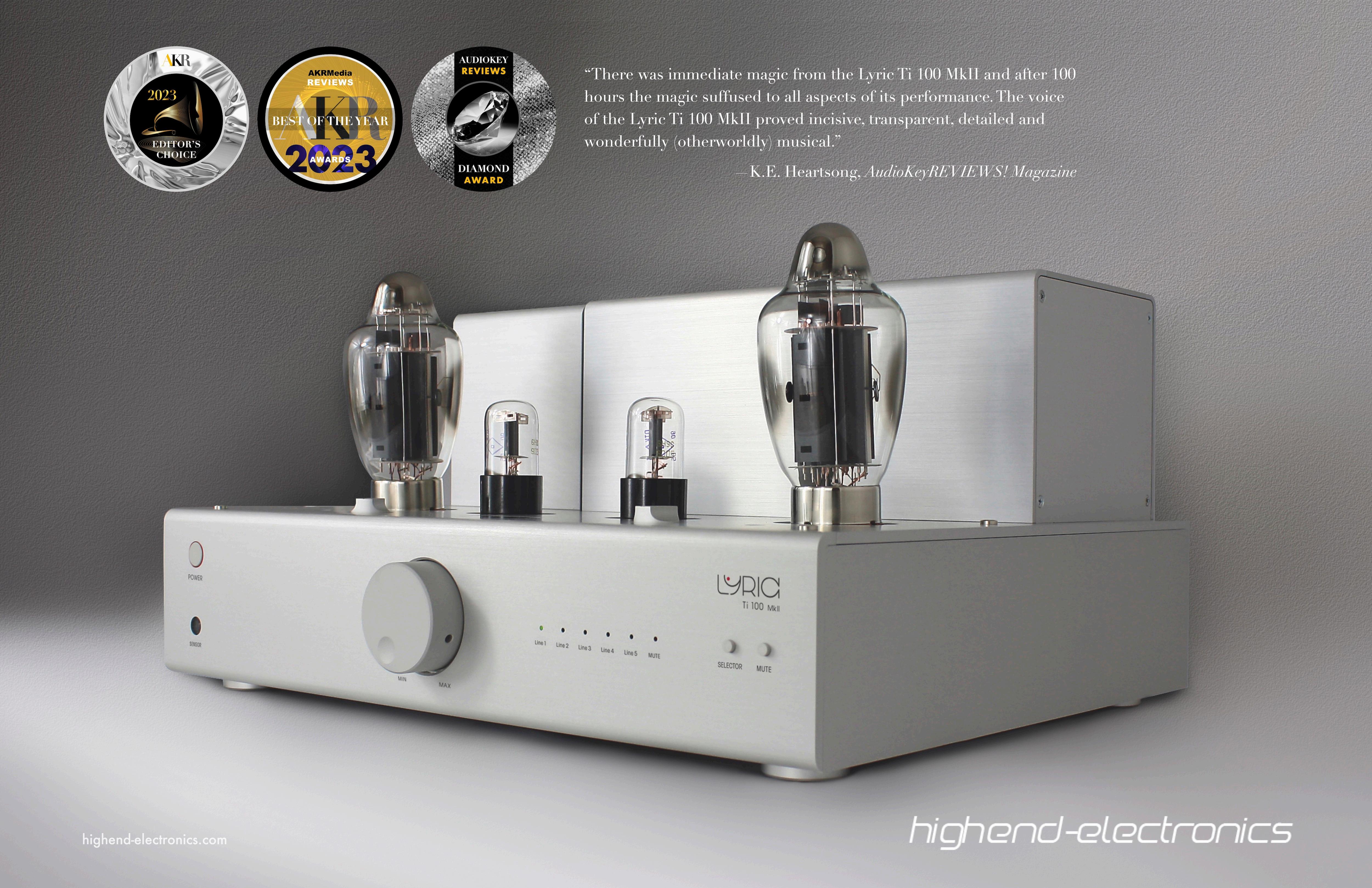

 Henri Matisse - The Red Sofa
Henri Matisse - The Red Sofa






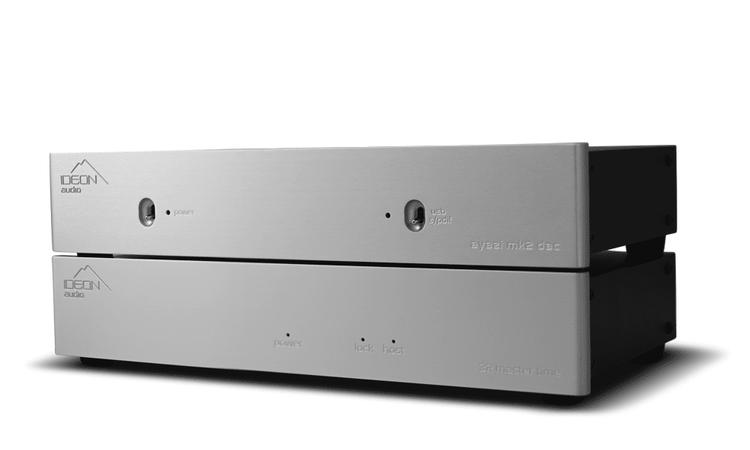 By Andre Marc
By Andre Marc

Ideon Audio is one of those brands that have been on our list to audition, based on word of mouth buzz and numerous positive reviews of their bespoke products. The company is based in Athens, Greece, and focuses on digital audio exclusively. They
can””, To achieve this they employ fully linear and low noise power supplies, with critical circuits getting dedicated lines. Also employed is obsessive signal re-clocking, at several stages, They also believe in isolated inputs and outputs, as mentioned, selecting
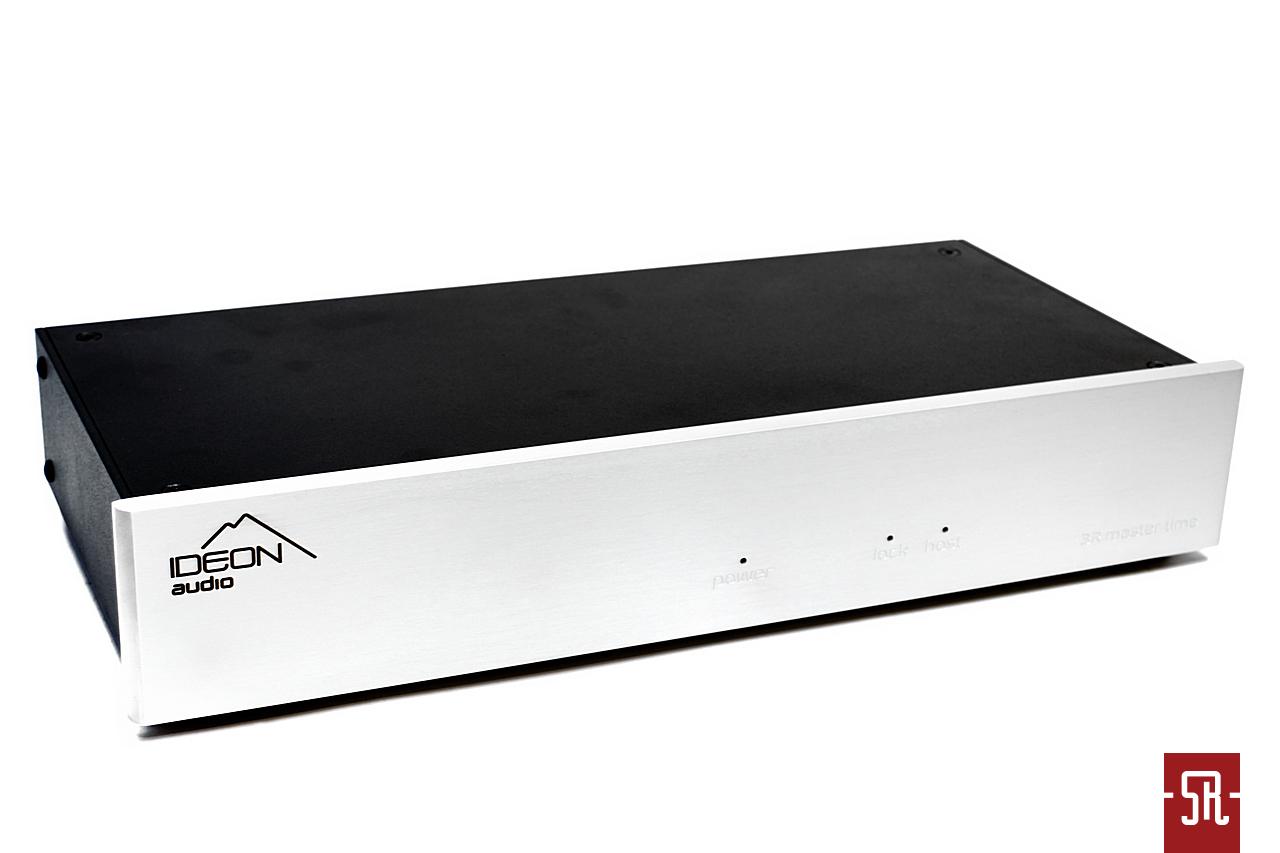
manufacturing philosophies with regards to digital audio. First, they say they choose the best components possible, without compromise. Second, they use in house designs, and avoid off the shelf solutions. And lastly, they believe in rigorous testing and hand assembly.
All this is to serve their stated goal is to make digital music files “as good as they

Star USB clock. In simplest terms, it is a USB re-clocker that is situated between your source, and DAC. It passes on all digital formats, including DSD. The end result theoretically is far lower noise and higher precision, which has a direct impact on the sound of digital music. The Black Star retails for $3900

The unit is about the size of most audiophile grade DAC units. It comes equipped with an aluminum faceplate, IEC

modular designs, which makes product updates easy.
SET UP & LISTENING:
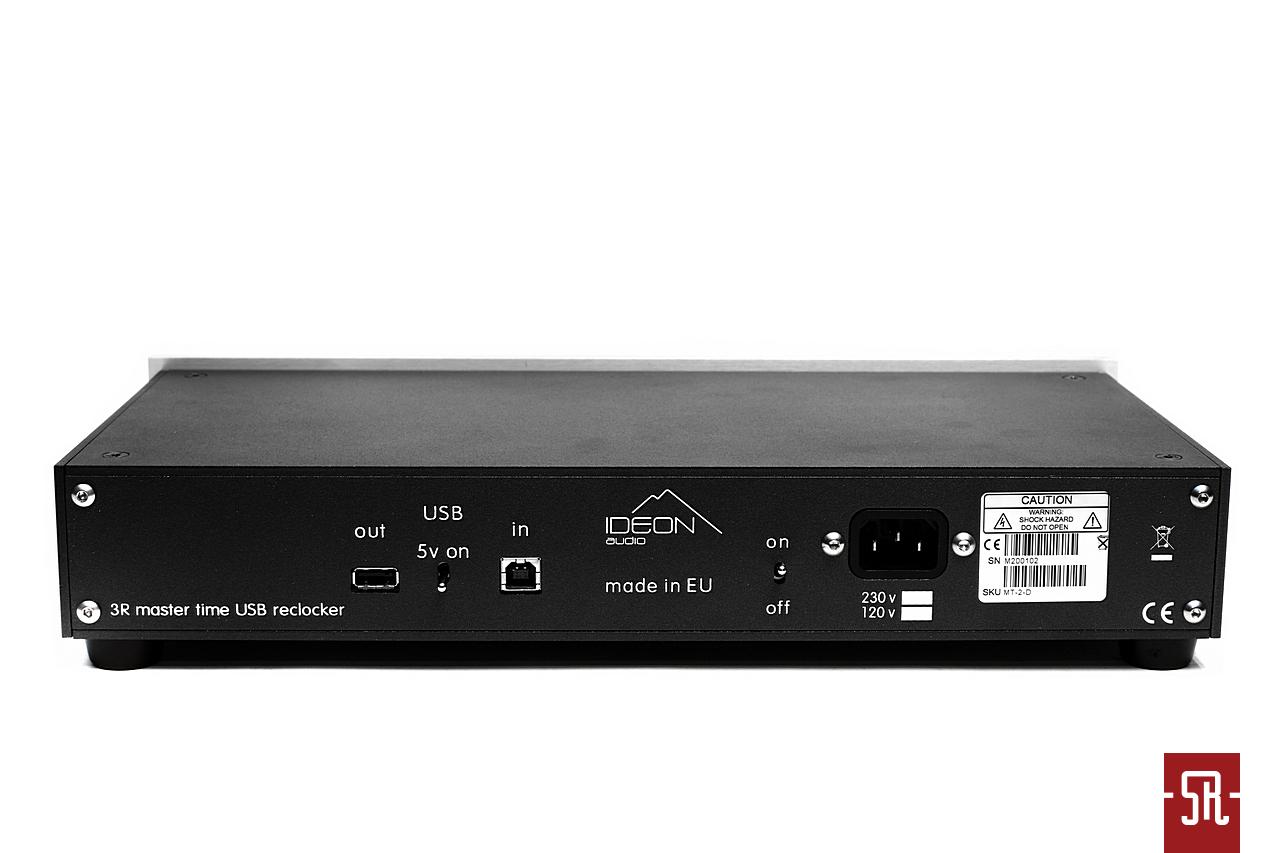
Eliminating the 5V current if not needed can only improve things.
The “3R” denotes that Ideon “re-clocks, re-generates, and re-drives” the USB signal. This is done with ultra-low jitter femto clocks and very low noise oscillators . Ideon emphasizes their custom power supplies as one of their secret weapons. There are subtle LED lights on the front panel that provide power status, as well and also note “Lock” and “Host” to let the listener know all systems are a go. Lastly, Ideon believes in upgradable,
Allnic M-3000 MK 3 monoblock amps, the Rogue RP-7 preamp, Boebicke W11 speakers, and Clarus cabling throughout. Our audio networking and playback software is Roon. We must note that we have used numerous USB isolation devices and purifiers over the years, with our current choice being the Intona USB Hi-speed isolator. We have varying degrees of improvements with most of the USB enhancement devices we have tried. Some offered no discernible difference,

and others, like the Intona, provide a subtle but clear improvement.
What followed, once the Black Star was installed, was perhaps the most profound result we have encountered in many years of reviewing. From the get go, music that we had been streaming from our NAS in the prior weeks showed the biggest positive transformation we have experienced with digital audio. To be perfectly honest, we were not expecting this. The reasonable expectation was a slightly more refined sound, and perhaps less digital grit.
However, what we heard was such a vastly improved listening experience, there was some disbelief at first. The first album we streamed was the debut from one of our favorite British bands, Kula Shaker, K. The 96 Khz remaster is an improvement over the CD, and smartly, the dynamic range was not highly compressed. Before the Black Star, the music on this album sounded smooth, a bit peaky in the treble, but a bit flat overall. Listening to the same album with the Ideon in place brought a three dimensional, holographic presence that was simply absent before.
To be quite honest, we even questioned our selves and wondered if we were imagining this improvement. But as we listened to more and more music that we were intimately familiar with, it became clear
this was no sonic illusion. We lost all track of time when listening to The Calling, an album by Irish vocalist Meav.
Her voice is a thing of wonder, and the chosen repertoire was a perfect match for her. On tracks like “Light Flight”, “Glimmering Girl”, and “Sovay”, she is accompanied by violins, flutes, acoustic bass, harp, and mandolin.. Meav and her accompanists even breathe new life into tried and true songs like “Wayfaring Stranger’ and “The First Time Ever I Saw Your Face.” The Black Star elevated this superb recording to another level, accenting the romance and overall longing in the performances. We just felt more connected to the music.
We went to cycle through most of the high rez Bad Company catalog, music that we have been using in recent reviews. One that we particularly enjoy is the Deluxe remaster of Straight Shooter, from 1975. On most of the album Paul Rodgers voice sits on a bed of lush acoustic and electric guitars, piano, propelled forward by the powerful drumming of Simon Kirke. What we found most astonishing is hearing new mix details with the Black Star in the loop. In particular, reverb tails, subtle drum fills, and vocal harmonies were so much more prominent. They did not sound apart from the total sound picture, quite the contrary, they were part of the whole fabric.
The same applies to the album that followed, Run With The Pack, from 1976, The title track had us awe struck. It features a prominent piano part played by Rodgers along with orchestration during the climax. The overall drama and emotion that the band brought to this recording comes through in spades with the Back Star, with everything sounding more coherent and impactful . To our ears, it made this 24 bit remaster sound much closer to the original vinyl release. A win!
An album we long hoped would be remastered is All That You Can’t Leave Behind by U2. It finally saw a 96 KHz release a few years ago and the result is a far better listen than the original CD. We are intimately familiar with this album, having heard it in every conceivable environment, as well as hearing most of the tracks live at concerts.
Larry Mullen’s crafty bass drum work so distinctly.
The last album we streamed, as saw it only fitting, was the very last album the late, great David Bowie released, Blackstar. It is a better sounding recording than his previous

effort, which came after quite a long absence from the music world, The Next Day. It was made while Bowie knew he was terminally ill, and it is majestic in scope and execution.

To say we were astounded at the level of impact of songs like “Beautiful Day”, “Kite”, and “Elevation” would be an understatement.The fuzzed out guitars on “Elevation” literally exploded out of the speakers, and various electronic effects were more prominent than we have heard before. It was also a revelation to hear drummer
The title track is a fantastical feast for the ears, with syncopated, jazzy drumming, saxophone, electronics, strings, and Bowie’s close miked vocal front and center. The Black Star made us appreciate what a master work this album was. We heard individual elements more clearly than ever, with bass lines, backing vocals, and keyboards intertwined but all musically organized.
We thought about the particular reasons we were hearing such improvements in detail
retrieval, dimensionality, and texture. Our conclusion was that a vastly lower noise floor, more accurate timing, and a purer USB signal must be what was at play. The music even seemed louder, as if we moved the volume knob up a half a decibel. We have experienced this with other top shelf products that lower the noise floor, like well designed power cords.
CONCLUSION:
The Ideon 3R Master Time Black Star paired with our Bryston BDA-3 DAC,, improved the sound of our digital system in clear and undeniable ways with no negatives. We experienced greater resolution, a more believable sound stage, and far more realistic texture.
Of course, this comes at a price. The price tag of the Black Star might raise some eyebrows but it will also open ears with it’s amazing performance. We would be skeptical if not for hearing it in our own system, with an already very capable DAC. We imagine the majority of astute listeners will come to the conclusion that we did. Ideon clearly has found a way to make transmission of USB audio faithful to the original master file. Highly recommended.
PRODUCT & COMPANY INFORMATION:
Ideon Audio 3R Master Time Black Star:
$3900
IDEON AUDIO:
Parren 6, Neo Psychiko, 11525 Athens, Greece
+30 210 6199887
info@ideonaudio
https://ideonaudio.com




 By Kathe Lieber
By Kathe Lieber
“Woke up, it was a Chelsea morning…” I must have been dreaming about Joni Mitchell, because that’s the earworm I woke up with this morning. I warbled along, alarming the cat. (You’d be alarmed too if you heard my voice.)
But that’s the way it is with Joni Mitchell songs. They worm their way into your mind, consciously or un-, and stick around, playing on an endless loop. Is it the melodies or the lyrics? Well, both.

she’d suffered a brain aneurysm that temporarily stole her ability to speak, walk, and play guitar and piano—but tonight Joni was well and truly BACK, after an arduous recovery. And legions of her fans were still identifying with the lyrics she’d first sung in her twenties, as “I really don’t know life at all” came full circle, many eventful decades later. The standing ovation lasted for several minutes, leaving Joni and many others in the audience misty-eyed.
The scene at the Grammy Awards in Los Angeles this past February was almost unbearably poignant. There was Joni Mitchell, 80 years old, accompanied by a posse of singers and musicians, notably Brandi Carlile, singing “Both Sides Now,” her signature song (well, there are several, but that night it was “Both Sides Now” for sure). She sat in an armchair, long braids hanging down over her shoulders, cane at the ready. If at times it seemed she was more declaiming than singing, well, we forgave her. In 2015,
In fact, that 2024 Grammy performance was not her first appearance since recovering from the aneurysm. Two years earlier, there’d been a tribute concert featuring a who’s who of performers, including Leon Bridges, Herbie Hancock, Cyndi Lauper, and Chaka Khan, covering songs from the long arc of Joni’s career. During a group sing-along of “Big Yellow Taxi,” Mitchell stepped up to the mike and intoned the famous closing line, “Put up a parking lot”—her first time singing onstage in nine years. The crowd, of course, went wild.
Joni grew up in Alberta, moved to Toronto in 1964, and became a fixture on the coffeehouse circuit. In 1967, after moving to New York City, she released her debut album, Songs

to a Seagull, produced by David Crosby.
Through the late 1960s, ‘70s, ‘80s, and ‘90s, she released an album every couple of years, not slowing her pace till the 2000s.
Over the course of her long career, many of Mitchell’s songs became successful covers for other artists, and her record companies soon came to rely on her as a solid moneymaker, going along with her musical experiments as she straddled musical borders —folk, pop, jazz. She tried some torch songs on the 2000 album Both Sides Now—but though she has the requisite steamy voice, so many artists have covered songs like “Sometimes I’m Happy” or “I Wish I Were in Love Again” that I just want to go straight to songs that showcase that unique Joni-esque magic—“A Case of You,” for example (with the requisite Canadian reference).
songs like “Free Man in Paris” and “Help Me,” along with less familiar tracks like “People’s Parties” and “Car on a Hill.” Listen closely to the lyrics of “Trouble Child,” which includes the immortal line, “Two heads are better than one.”

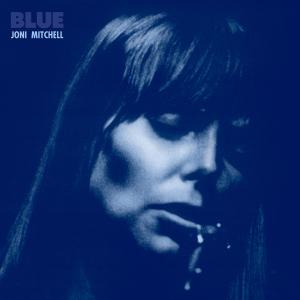
Listening to Joni’s discography as I researched this article, I was delighted to discover some songs and albums I’d completely forgotten about. The only song I recalled from her Hejira album (1976) was “Furry Sings the Blues,” but the whole album —a stylized travel diary—is worthy of your listening time. Court and Spark (1974, remastered in 2022, with tribute tracks from the likes of Stevie Wonder), ultimately her best-selling album, includes much-played
Above all, for me—and I’m pretty sure for you—Joni’s songs weave the emotional backdrop of our lives. Chances are you can recall at least one emotional milestone from your own past that’s set to a Joni Mitchell song. Her music has been featured on the soundtrack of many a movie and TV series: “Chelsea Morning” in the movie After Hours (1985); “Big Yellow Taxi” on Friends-season 2, episode 22, to be precise. And of course, there’s the unforgettable scene in Love, Actually when Emma Thompson realizes her husband (Alan Rickman) has been unfaithful and retreats to the bedroom to compose herself, to the heart-rending strains of “Both Sides Now.”
Many Joni Mitchell lyrics are deeply embedded in popular culture. Who can forget “Don't it always seem to go/That you don't know what you got 'til it's gone?/They paved paradise to put up a parking lot.” And how about “Songs to aging children come…/Aging children, I am one…” (No, I’m not feeling ancient and nostalgic—why do you ask?)

Studio albums
• Song to a Seagull, debut album, 1968
• Clouds, 1969
• Ladies of the Canyon, 1970
• Blue, 1971
• For the Roses, 1972
• Court and Spark, 1974
• The Hissing of Summer Lawns, 1975
• Hejira, 1976
• Don Juan’s Reckless Daughter, 1977
• Mingus, 1979
• Wild Tings Run Fast, 1982
• Dog Eat Dog, 1985
• Chalk Mark in a Rain Storm, 1988
If you’re in a Joni mood this weekend, click through to your favourite music purveyor and cue up a few of her lesserknown albums like Turbulent Indigo (1994— the album cover, designed by Joni, is a rendering of her own face in the famous bandaged selfportrait by Van Gogh). The songs on Turbulent Indigo are mostly thoughtful, as is Joni’s wont—listen to the lyrics of “The Magdalene Laundries,” for example (“Prostitutes and destitutes/And temptresses like me/ Fallen women/ Sentenced into dreamless drudgery”).
• Night Ride Home, 1991
• Turbulent Indigo, 1994
• Taming the Tiger, 1998
• Both Sides Now, 2000
• Travelogue, 200
• Shine, 2007
Of course, you’ll want to revisit Blue (1971), her first million-selling album, and Clouds, her second LP (1969), which includes the original versions of “Both Sides Now” and “Chelsea Morning,” but a few musical detours à la Mitchell would not go amiss.
What’s her “best” album? An impossible question. If pressed to name my favourite Joni Mitchell songs (a daunting task—I could narrow it down to my top 20, perhaps),
I’d say… er, um, “River” (the quintessential winter song), “Carey,” “Blue,” “In France They Kiss on Main Street,” “The Circle Game,” and of course the aforementioned “Both Sides Now” and “Chelsea Morning”… Now I want to listen to all her albums again. There’s my weekend sorted.
“If you want me, I’ll be in the bar.” (Virtual brownie points for naming the song that comes from.)
Six live albums, the most recent being Joni Mitchell at Newport, 2023, and 17 compilation albums…plus countless singles, extended plays, video albums, music videos, tribute albums, and on and on.
• Eleven Grammys, including Best Folk Performance for Clouds, 1969, and awards for Best Traditional Pop Vocal Album and best Instrumental Arrangement for Both Sides Now, 2001
• Polar Music Prize, Royal Swedish Academy of Music, 1996
• Inducted into the Rock and Roll Hall of Fame, 1997
• Grammy Award for lifetime achievement, 2002
• Companion of the Order of Canada, 2004
• Kennedy Center Honor, 2021
• MusiCares Person of the Year, Recording Academy, 2022
• Gershwin Prize for Popular Song, 2023
• Grammy nomination for Best Historical Album for Joni Mitchell Archives, Vol. 1: The Early Years (1963-1967)
 Vincent Van Gogh - Autumn Landscape, 1885
Vincent Van Gogh - Autumn Landscape, 1885

 HIFIMAN SUSVARA
HIFIMAN SUSVARA


Each of us have a particular ability, or several perhaps, that we are predisposed to, are good at, or excel in. The difficulty I have found over the years, and I imagine most encounter, is discerning or coming to grips with what that or those abilities are. Some appear never to find them or even to search them out, instead opting for what they are ‘supposed to do’ as dictated by another or by societal norms, which is a rather unfortunate turn of events in anyone’s life.
In my long years, I have discovered that writing is both a love and an apparent talent, which began at age five, when I wrote poetry for my seven aunts. Of course they adored my poems and this abetted a will to write while growing the ‘writing muscle’. A love of design and a creative ability are also my talents as it seems. And it is this combination of ‘abilities’ that have found me starting this magazine and website and writing reviews, though more of my books and screenplays are finding their way to interested parties. Who of thunk?
Audio components are, in fact, likewise possessed of a talent(s) and abilities which find them set apart from their respective kith and kin, while setting standards, in some cases, for all of ‘audiodom’. In this respect, I have come across DACs, streamers, speakers, amplifiers, etc. that have
proven my prior statement to be true. And there are entire genres of audio equipment— electrostatics, single-ended triode and OTL amplifiers—that lift all boats, musically speaking. Then there are the planar magnetic headphones, whose top performers—Meze Empyrean Elite, ABYSS AB1266 Phi TC and now the HiFiMan Susvara—are incredibly talented. This brings us to the current review of the HiFiMan Susvara and its talents and abilities, all gathered at the cutting edge of headphone design.
Yes, the hits do keep on coming even in terms of a rather narrow niche—Top of the Line (TOTL) headphones—STAX SRX9000, ABYSS AB1266 Phi TC, ZMF Atrium, Meze Empyrean & Elite and those soon to be determined.
REFRAIN: Unlike most reviews, this review will be non-sequential, as it will start with how the headphones actually sound and not the process of physically “undressing” them and/or laying out their various parts, specifications, etc. Think of this review then, as a non-linear movie— In the Shadow of the Moon, Kill Bill, Pulp Fiction, The Queen’s Gambit, etc— that, likewise, starts at the end and winds its way to the beginning.
THE SYSTEM
• Grimm Audio MU1 Streamer
• Silent Angel Rhein Z1 Streamer
• Silent Angel Forester F2 Power Supply
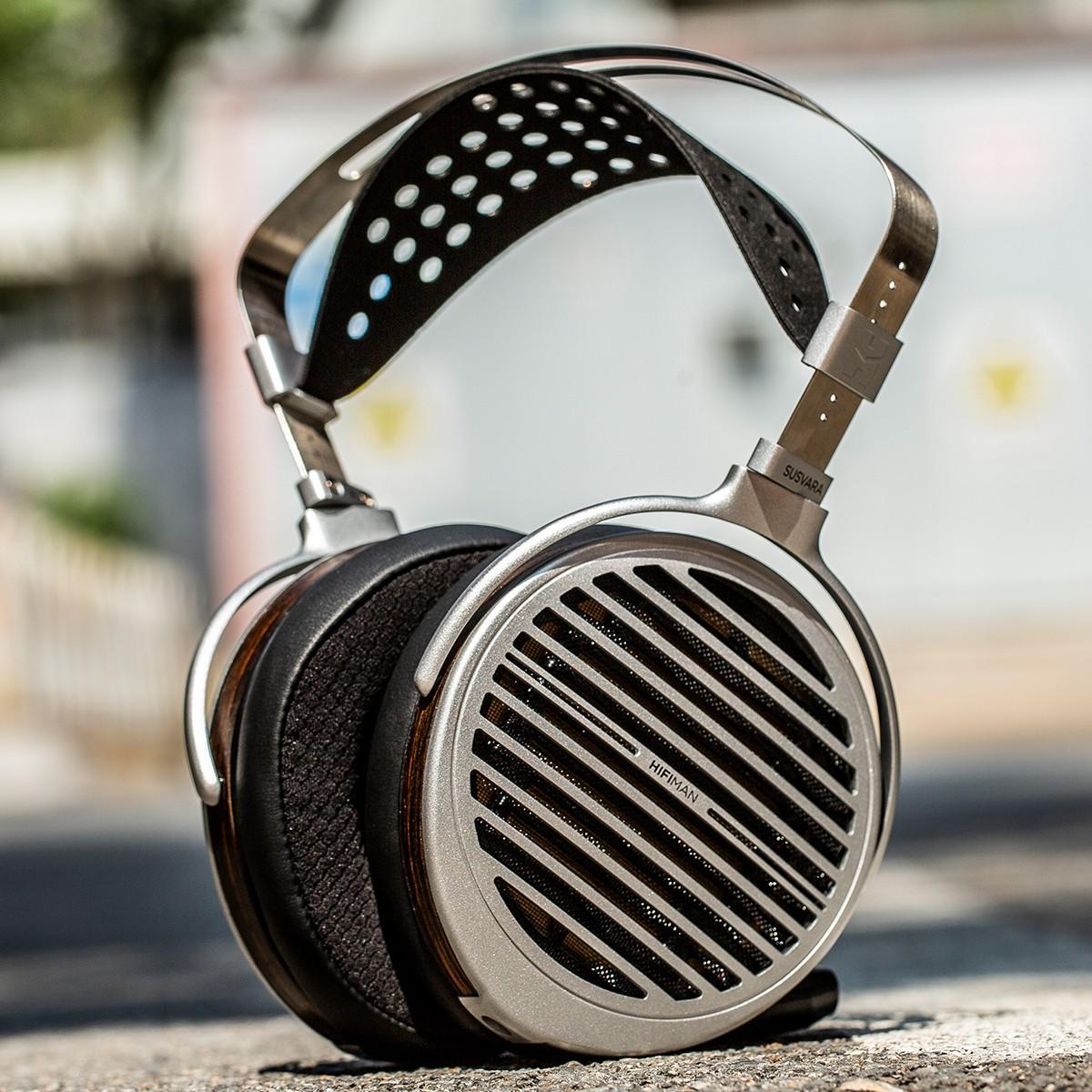
audiokeyreviewsCA.com


• Silent Angel Bonn NX Network Switch
• Silent Angel Genesis GX Master Clock
• Bricasti Design M1SE DAC
• ALLNIC AUDIO D 10000 OTL/OCL DAC
• Aurorasound HEADA Headphone Amplifier
• ALLNIC AUDIO HPA 10000 OTL/ OCL Headphone Amplifier
• Pass Labs HPA-1 Headphone Amplifier
• ABYSS AB1266 PHI TC Headphone
• MEZE Empyrean Headphone
• HIFIMAN SUSVARA Headphone
• Kubala Sosna—cabling and wires
• RSX Beyond Power Cables
• Danacable Lazuli Nirvana Headphone Cables
• Audience Hidden Treasure CAT7 Ethernet cables
• TORUS RM20—Power Generation
Natural. The HiFiMan Susvara is exceptionally natural in its ability to communicate music. And this translates to the naturalness of tone and timbre, to air and atmosphere (of a given venue) and to staging, all leading to the Susvara’s ability to, well, ensnare one for long hours of listening, and very comfortably I might add.
Yes, natural is a term consistent in my notes as it surfaces continually over the course of my review of the HiFiMan Susvara. One does not have to ‘listen’ or seek it out, as it is always there, setting itself apart from the various headphones attempting naturalness
and almost getting there – save coloration or soul-sucking neutrality (a coloration as well), or tonal/timbral inaccuracy, however slightly off. This ability, coupled with the sum of its others abilities, listed below, allow the Susvara to transcend simple music playback and provide instead a you-arethere presence and the resultant palpability of a ‘genuine’ interaction.
The Susvara’s tone and timbre relative to voice and instrumental notes is superb and, in truth, calls attention to itself for its incredible, again that word, naturalness, relative to all other headphones. The Susvara, marginally, even pushes past the ABYSS AB1266 Phi TC and the STAX SR-X9000, two stellar headphones, and given the talents and abilities of the aforementioned headphones, this is truly saying something. And did I mention how beautifully refined the Susvara is?
But there is a good deal more to the Susvara that lifts it to a rather commanding position. It is incredibly quick/fast as its microdynamics are on the level of an electrostatic headphone and its ‘speed’ folds everything in with the proper pacing, timing and rhythm, again a vaunted electrostatic ability. But where electrostatics can, in general, seem more ethereal, lighter, the Susvara brings a concurrent weight and solidity that, again, find it more natural, grounded.
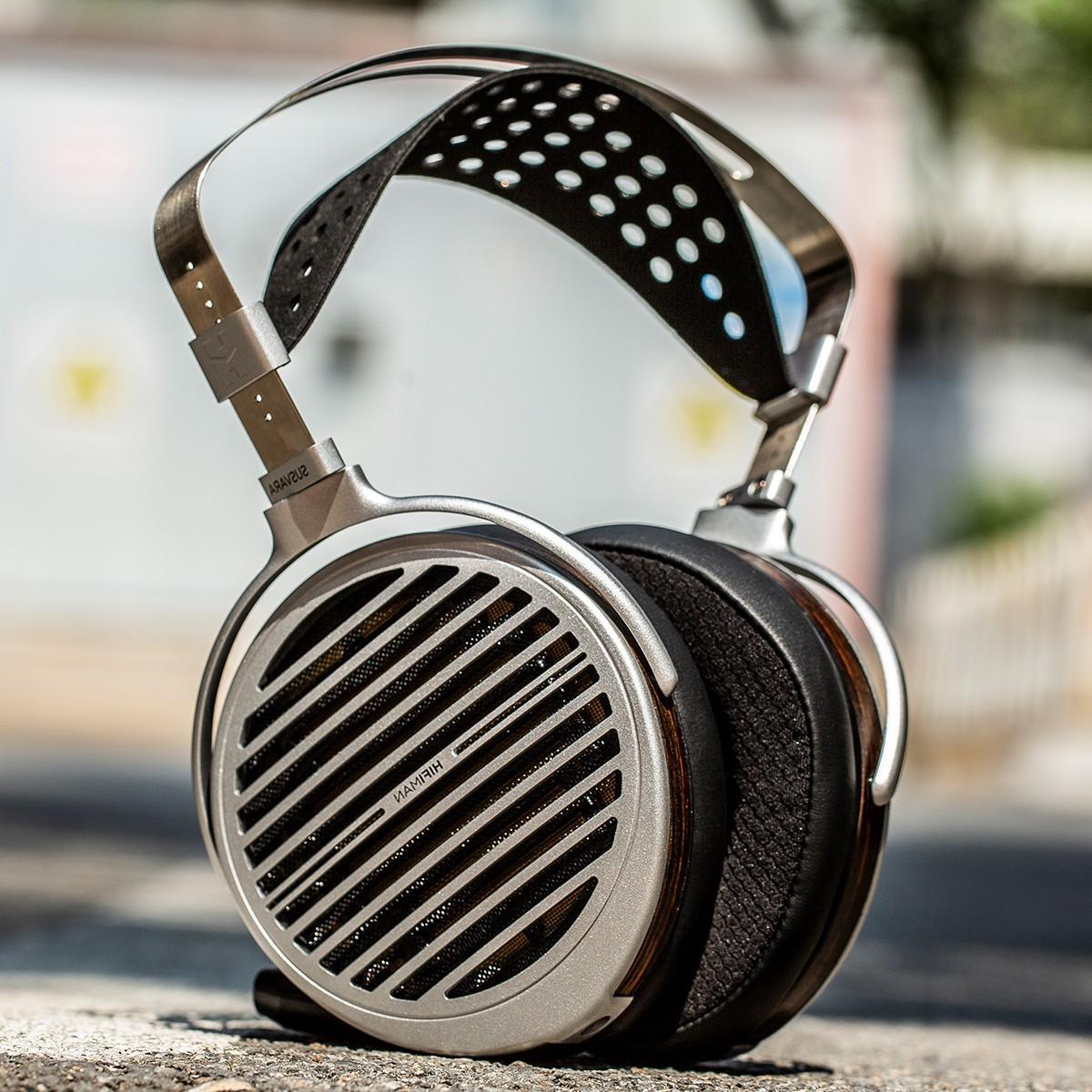
And then there is its dimensionality. I’ve spoken of this often with the electrostatics and then with two non-electrostatics—
ABYSS AB1266 and the ZMF Atrium— that came to within a rather thin patina of an electrostatic’s abilities. The Susvara, however, pushes even closer in regard to dimensionality than the prior headphones, making live and choral music eminently
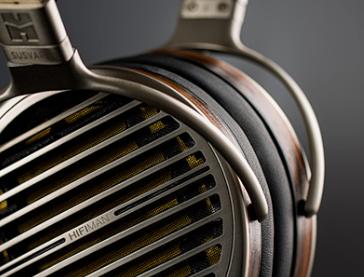
more enjoyable. Transportive was a term I often used when describing electrostatic headphones, or Tardis-Like, a Dr. Who reference, which meant that you were being transported to the venue where the music was first recorded. Few audio components of any kind can do this, so when one does, it is truly exceptional.
Finally, I would be remiss if I neglected the Susvara’s other outstanding technical abilities. Its ability to both excavate and carefully extract detail on par with the best of
the best headphones and, dare I say, the abilities of other TOTL components, not just headphones. And it is this level of detail retrieval that provides the space for nuance and intention and emotion to unfold as one. The Susvara’s transparency brings into focus even that which lies at the edge of a given soundstage, and in a number of cases reveals that which was not previously known to have been there, at the edge of the stage.
The HIFIMAN SUSVARA’s soundstage is an electrostatic-like soundstage, meaning that it captures the given venue accurately with great realism, depth, and holographic imagining but, as mentioned above, it adds weight/gravitas to that mix, fleshing out a performance. Further, the Susvara can, like the ABYSS AB1266, be quite intimate or remarkably cavernous, when called to be so. And its staging is superb, as width, depth, relative positioning/layering, air, and ambiance (of the venue) again point it in the direction of an electrostatic headphone with planar/dynamic abilities.
BASS
Highly detailed. Electrostatic-like speed. Superb transparency and resolution. I had mentioned in the Abyss AB1266 review that:
“There was some trepidation, I must admit, with the Aurorasound HEADA driving the

Abyss AB1266 with its 2 watts of power.
The Abyss at 88db is not at all very efficient and its 50 Ohm impedance requires a good deal of power run across it.”
The Susvaras, however, presented an even more rarefied case as their ‘efficiency’ dropped down to 83db with 60-Ohms of impedance.
“Yikes(!),” was the first word that came to mind, but in addition to the Aurorasound
HEADA, the current, in-house, reference HPA, there was the ALLNIC HPA 10,000 also in for review, and with its 10 watts of power, things would be handled one way or the other when it came to bass reproduction,.
applied gain (11-12 o’clock @ High Gain).
The Susvaras rendered Alexandre Desplat’s “Postcards” (The Curious Case of Benjamin Buttons Soundtrack, Concord Records) with a wide, natural, and differentiated soundstage. The deep ‘rumble’ at the edges of the
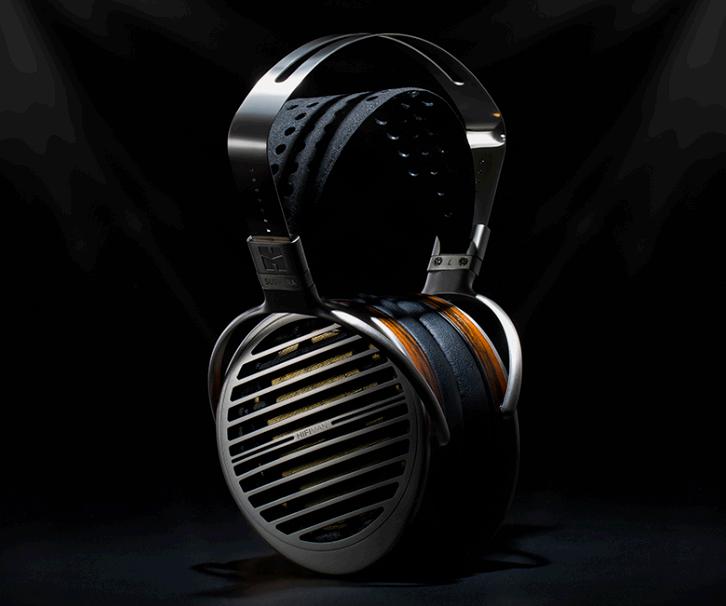
“Postcards” had both weight and gravitas. balance of the bass review tracks—
Delfeayo Marsalis’
The Last Southern Gentleman, Troubadour Jazz Records), David Holland’s “B-40/ Emerald Haden and Taylor’s
I needn’t have worried as the HEADA has proven time and again that it is quite the marvelous headphone amplifier and able to leap… well drive even the most inefficient of headphones with moderately
audiokeyreviewsCA.com
Mao” (Nightfall, Naim Records)—were wielded against the Susvara and it handled every one with incredible naturalness, superb tonal/timbral differentiation, blazing dynamics, and exceptional staging. And while the Abyss AB1266 Phi TC does, indeed, go deeper across the bass region, the attendant strengths
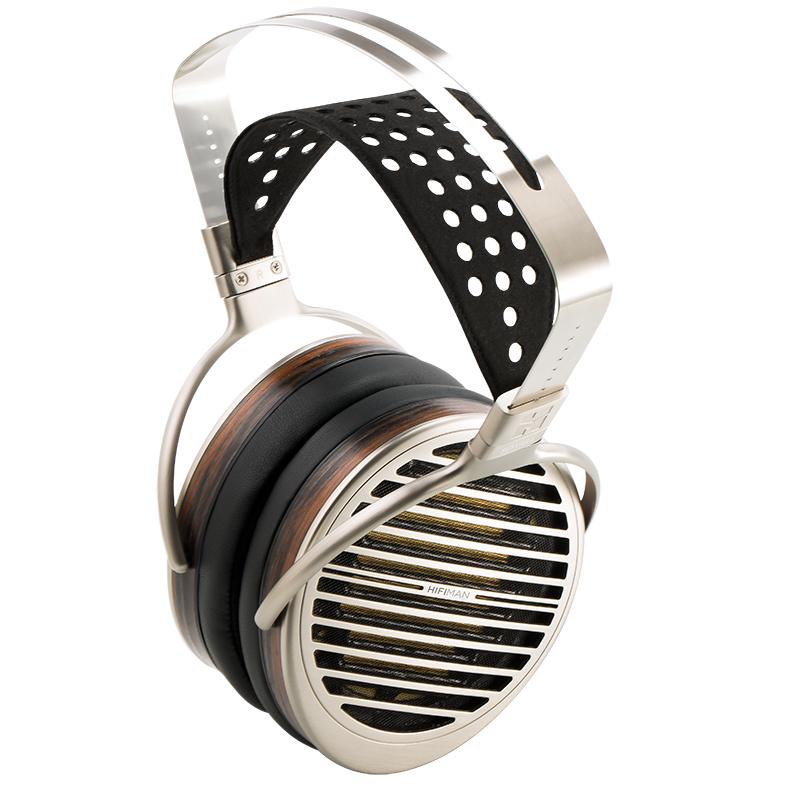

of the Susvara certainly level the playing field. I’ll take them both!
Natural.Tonally & Timbrally Superb. There is the aforementioned naturalness which conjures impeccable midrange beauty, timbre, and tone that bring a true sense of a voice or an instrument with all the technical attributes easily discernible. This quite rare ability, even among the very top headphones, regardless of technology, allows one to listen across genres with an ease and naturalness that summon performers and performances for hours on end to you or you to them. Perhaps another way of describing this in relation to the human voice is a ‘humanness’ that is as far away from a digital rendering as ice is from fire.
Melody Gardot’s Worrisome Heart (Decca) heard via the Susvara is, perhaps, one of the most beautiful and detailed renderings that I’ve yet listened to. Patricia Barber’s sibilance free performance (Verse, Premonition Records), known to be ‘hot’ with less than stellar components across the chain, is itself incredibly natural, refined, and presents technical bonafides on the same level as both the ABYSS AB1266 Phi TC and the STAX SR—X9000 electrostatic headphone. Sarah Vaughan’s After Hours (Parlophone, UK) is the most breathtakingly natural and the clearest, the
most realistic, the most intimate that I have ever heard it with the Susvara.
The Susvara brings the music home. What do I mean by this? What this transducer does for one’s music is to render it in a manner that is beguilingly natural, seductive, detail rich, and expressive. Yes, a mouthful of descriptors that help me to get close to describing what the Susvara does, though I may not have captured its, well, essence in its entirety.
TREBLE+
Sometimes massed violins do not actually sound like massed violins, when any part of the ‘High Fidelity’ playback chain shirks its responsibilities for accuracy or naturalness of tone and timbre. However, when there is synergistic alignment and all components meticulously do their jobs, tone and timbre are superb, engrossing, and truly rewarding. The HiFiMan Susvara is outstanding in this respect and will bring great clarity and many revelations to one’s music.
Across countless albums and streams this was true of the Susvara regardless of the genre, and the Susvara’s naturalness and truthful beauty relative to tone and timbre compelled one to listen, happily, for hours. The Susvara also highlighted the lack of relative ability, given the consistency of the playback chain, of other headphones. Suffice to say, that if tone and timbre are inaccurate

or, God forbid, wrong, then one’s musical experience is, well, flawed, inexact, colored, etc. Across the treble region the Susvara’s naturalness again set it apart from all headphones regardless of their technological clan—dynamic, planar, electrostatic, etc.
SUSVARA VS ABYSS AB1266 PHI TC There are a number of things that the Susvara and the ABYSS AB1266 ($5,995), as planar headphones, have in common that seat them at the pinnacle headphone performance.
To begin, their ability to unearth copious amounts of detail with a preternatural, matter-of-fact ease that may well border on audacity. Though if you are the owner of said headphone(s) or their reviewer it is an audacity that is most welcome and which quickly propels either headphone to the head of the class and to top honors. Dynamics, microdynamics, and pacing are likewise without peer for the two headphones, though one must certainly consider the STAX SR-X9000 in the mix here. And then, there is the incredible ‘openness’ as though the listener is suffused with the air of a given venue, and the Susvara’s and the ABYSS’ ability to provide said venue to its full depth and width. Further, both headphones possess the ability
to layer the soundstage—place musicians at relative depth and width— that would seem at odds with a headphone and more at home with loudspeakers, but these two headphones (as do the best electrostatic headphones) recreate the stage with great mastery and truth and fidelity.
Where the Susvara and the ABYSS AB1266 very slightly appear to edge each other out are in the areas of overall bass weight/gravitas, tonal and timbral shading/ accuracy, naturalness, and comfort. To be clear, they are both exceptional in the above areas, far above any dynamic or planar headphone and many electrostatics that I have reviewed, heard, or owned to date. One imagines, however, that with TOTL—Top of the Line—headphones there must exist an inherent competition to push past all others, outdo all competitors.
In this respect the ABYSS AB1266 manages to push ahead of the Susvara in its ability to plumb the depths to the HolyBass-Head-Grail, that is, given the accompanying amplifier to snatch it up with ease. The Susvara is by no means bass ‘shy’ or ‘weak’ and many, this reviewer included, would be as happy as a clam with the Susvara in this respect. However, for tone, timbre, and naturalness there is no other headphone of which I am aware that captures and renders tone and timbre so realistically, so naturally, and with such ease as does the Susvara. And

in this ability even the electrostatics cannot match the Susvara. The ABYSS AB1266 is indeed exceptional but here the Susvara pushes ahead. And comfort, while the ABYSS is not uncomfortable, given its Frankenstein-like form and ‘air-clamping’ mechanism, the Susvara is extremely comfortable and provides for a fit that one can happily wear all-the-day long.
In truth, I find the headphones complementary and different enough to give distinct perspectives on one’s music that are always at the tip-top of the game. That is to say that having both would, no doubt, greatly benefit the headphone connoisseur.
SUSVARA VS STAX SR-X9000
While the Susvara and the STAX SRX9000 ($6,200) represent an ‘Apples versus Oranges’ comparison given their technological differentiation—planar versus electrostatic—I have come to know them both quite well, so as to put forth a goodly and reasonable comparison.
Firstly, the Susvara and STAX headphones are alike in that I find them beautifully designed and extremely comfortable for all day wearing/listening or reviewing. They are both exceptionally musical in a way that compels one to listen for hours on end. To say that I have been ‘enraptured’ by their abilities would not be an exaggeration. And the Susvara and the
STAX SR-X9000 are detail hunters/ excavators of the first degree. They both possess lightning-fast abilities with regard to dynamics and microdynamics/transient speed, the combination of which appears to conjure ‘lifelike’ performances and in-venue ‘seating’—you are there—like no other headphones.
Where the two headphones differ, interestingly enough, is in their respective bass weight and gravitas. The Susvara is more hard-hitting in the bass region, carries more overall weight, and reaches more deeply and more ‘dynamically’ toward the sub-bass region, but not into the sub-bass region. The STAX SR-X9000 provides an exceptional measure of bass response, perhaps the best of any electrostatic headphone, but compared to the TOTL Susvara it falls a hair’s width short. At the other end of the spectrum the STAX SR-X9000 scales the treble heights with unmatched abilities replete with a transparency, resolution, and clarity that have to be experienced. In this respect, the SRX9000 has no peer. In the midrange however, the Susvara, given the weight of the upper bass which extends but does not diminish fidelity or clarity, is more significant, tactile, fleshed out, though the STAX SR-X9000 is very close behind.
If these two headphones were able to utilize the same amplification, which they cannot, then they too would be very complementary, but having them both means
investing in a complete separate system—an electrostatic HPA—to keep them both. Though they are that good, cost for most would certainly be a factor.
Wow! And the hits keep on coming! Yeah, not that long ago I was singing the praises of the ABYSS AB1266 Phi TC and before that the STAX SR-X9000 and they are still every bit as good as reviewed. The HiFiMan Susvara now easily joins that rather fantastic duo with a few talents up its ‘sleeves’ that allows it to move slightly past the other two headphones in certain areas—naturalness, musicality, blazing speed (even relative to electrostatics!)—while being their equal in most others.
The Susvara is truly a phenomenal planar headphone with, perhaps, its main differentiators being its rather sublime naturalness and its exacting way with tone and timbre, which lift the playback of one’s music to new levels of performance and enjoyment and technical prowess. And one must certainly mention its electrostatic-like speed which, well, brings live performances and choral music to life, as only electrostatics have been able to do.
One, however, must be very clearly aware that the HiFiMan Susvara will not suffer the poorly powered, nor the qualitatively weak headphone amplifiers. That said, it has easily won our
DIAMOND AWARD for its sublime abilities placing it on that aforementioned plateau of excellence with the ABYSS
AB1266 Phi TC and the STAX SR-X9000.
Pros: Natural, more so than any headphone I have heard to date, and, matched with its superb technical abilities, this makes the HiFiMan Susvara perhaps that desert island headphone or, in this day and age, that deeply buried, post-apocalyptic-bunker headphone that will see you through until septic failure or water/food shortage or catastrophic disagreement with your bunker mates.
Cons: If power was the “Achilles Heel” of the Abyss AB1266 Phi TC then it is doubly that for the HiFiMan Susvara. You’ll need high quality power from a high quality HPA of at least 2 watts.
THE COMPANY
HIFIMAN
SUSVARA HEADPHONES ($6000) customerservice@hifiman.com
1-201-HIFIMAN (1-201-443-4626)
https://store.hifiman.com/




 Vincent Van Gogh - Evening Landscape with Rising Moon, 1889
Vincent Van Gogh - Evening Landscape with Rising Moon, 1889

 ACCUSTIC ARTS PLAYER II
The Pinnacle of CD Playback? You Bet!
ACCUSTIC ARTS PLAYER II
The Pinnacle of CD Playback? You Bet!
 By K. E. Heartsong
By K. E. Heartsong
Transcendence, which features Johnny Depp and Rebecca Hall, opens with a man placing a computer keyboard under a door as a makeshift doorstop. The ‘internet of all things’ has gone ‘kerplunk’—crashed with a thud—and Information Technology (IT) is defunct and computers obsolete. Got traditional HiFi, a CD player, a turntable? Would albums, eight-track tapes, cassettes, and CDs once again be…king? How many dystopian films paint this as a possibility?
Do you remember when albums and turntables were dead? Yeah, me too.
What I have learned over the past several months in the course of evaluating a range of CD players (reviews forthcoming), is that CD players have, oddly enough, followed the life, death and rebirth cycle of, well, turntables. Suffice to say that technology and technologists have breathed fresh life and vigor and new capabilities into CD players while the various new mechanisms— transports, DACs, decoding/upsampling modalities, etc—make them, well, better! This might be called ‘The Great CD Renaissance’. Maybe.
This brings me to the review of what may be, to date, the CD player destined to be at the very forefront of this renaissance. This is the Accustic Arts Player II CD player ($22,500) and it is imbued with the gathered wisdom of the technologists and of burgeoning technologies. How good is the Accustic Arts Player II CD player really?
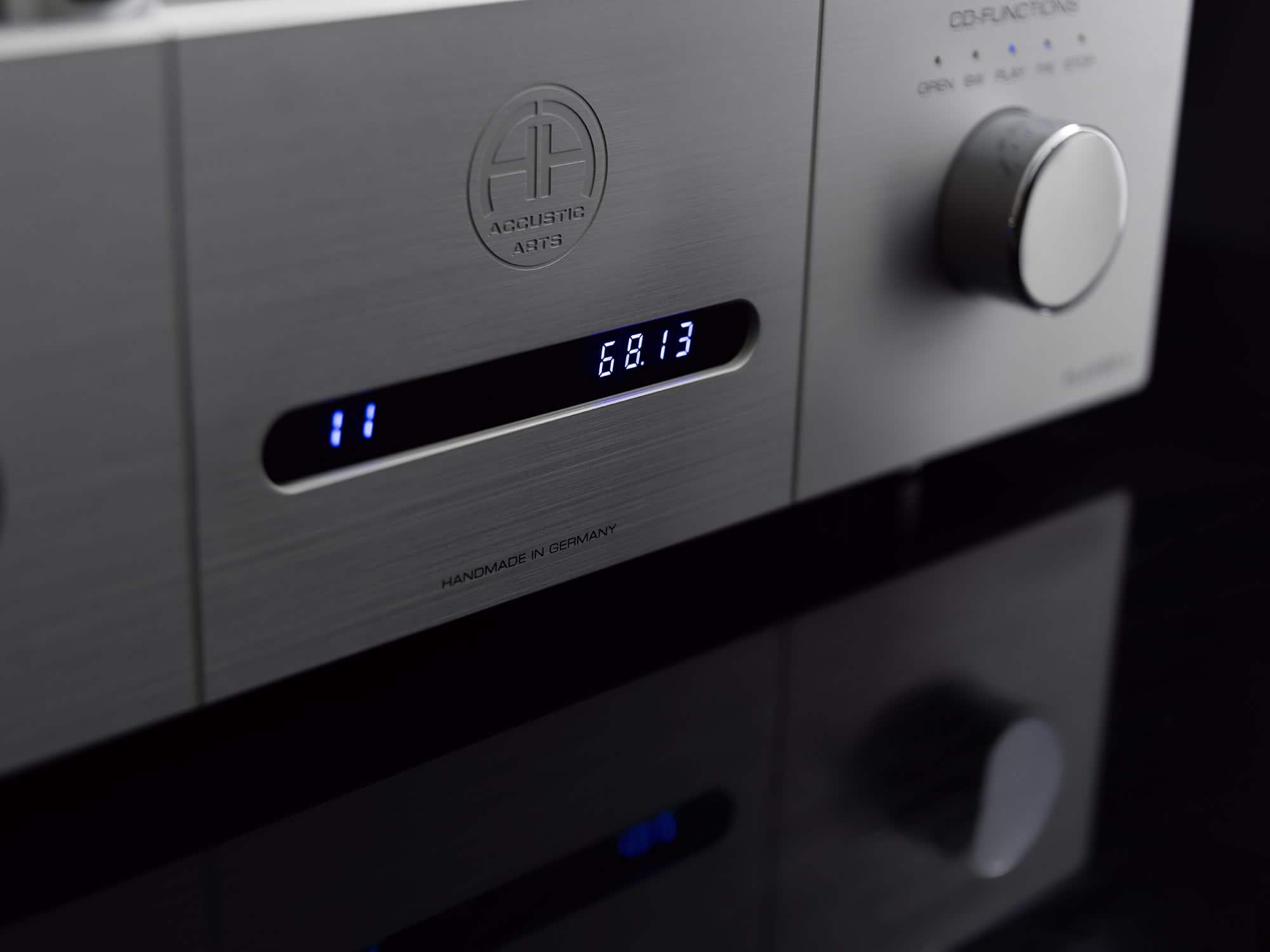

As mentioned in my previous review of the PS Audio Transport/DAC combo ($12,500), between the years of 1983 and 2020 there were 15.1 billion CDs sold in the US alone. And while a good number of them may well be in landfills, one imagines that a good deal more are still available for playback. This alone who posit that CDs and CD players are dead.
REFRAIN: Unlike most reviews, this review will be non-sequential, as it will start with how the components actually sound and not the process of physically “undressing” them and/or laying out their various parts, specifications, etc. Think of this review then, as a nonlinear movie—Memento, Kill Bill, Arrival, Eternal Sunshine of the Spotless Mind, etc—that, likewise, starts at the end and winds its way to the beginning.
 Claude Monet - Water Lilies
Claude Monet - Water Lilies
Formidable. Within a single chassis the Accustic Arts Player II simultaneously challenges any and all Top-Of-The-Line (TOTL) CD players and DAC/Streamer combos with the ROON Nucleus+ as primary streamer, is no small task.
Have technologists and technology given CD players and, in particular, the Accustic Arts Player II, an analog voice which possesses all the naturalness, richness, transparency, and resolution once believed to belong in the province of either/or—analog or digital? The short answer is yes and beautifully so.
This is not my first experience with Accustic Arts. I had owned at one time, long ago, its Transport and DAC components, designation unremembered, and I lament to this day ever selling them. If you’ve been on the audiophile merry-go-round, then you know exactly what I mean.
The Accustic Arts Player II brings a whole-cloth naturalness that is easily discerned and yet remains hard to fathom. As one’s shoulders fall and tension ebbs away one instinctively searches for the turntable responsible. But there is no turntable. And when called for there is an aliveness born of transparency, resolution, and a ‘vacuuming up’ of detail that lays a performance naked and startling when called for. Further, there was no streaming combination that bested the
Accustic Arts Player II in CD player mode for the careful resolution of voices, that made clear lyrics that had been guessed at or simply overlooked or unavailable (see below)!
Words and phrases that are often used to describe this phenomenon are ‘palpability’ or ‘as if transported to venue’ or a ‘you-are-there’ experience. The Player II’s CD playback as well as its streaming abilities will touch heart and soul and provide for one of the most immersive and engaging experiences I have ever had with a CD player. I have owned many TOTL CD players and DAC/Transport combos over the years and have experienced a good and growing number of today’s ever evolving models but, to date, the Accustic Arts Player II has no equal. No equal.
My quickly growing cache of CDs speaks clearly to its abilities, and my preference to listen to it and less so to streaming media is another powerful indicator of where my

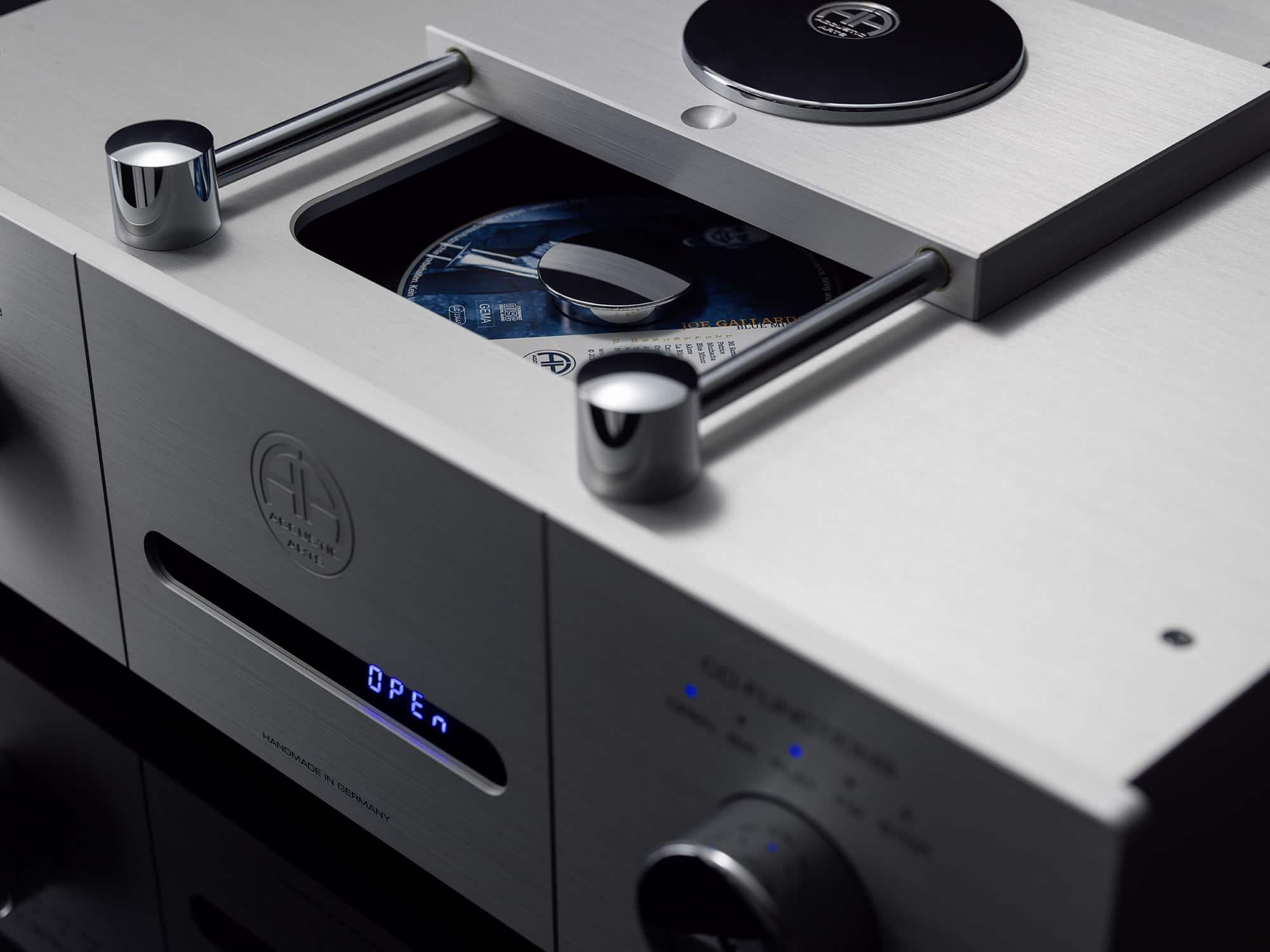
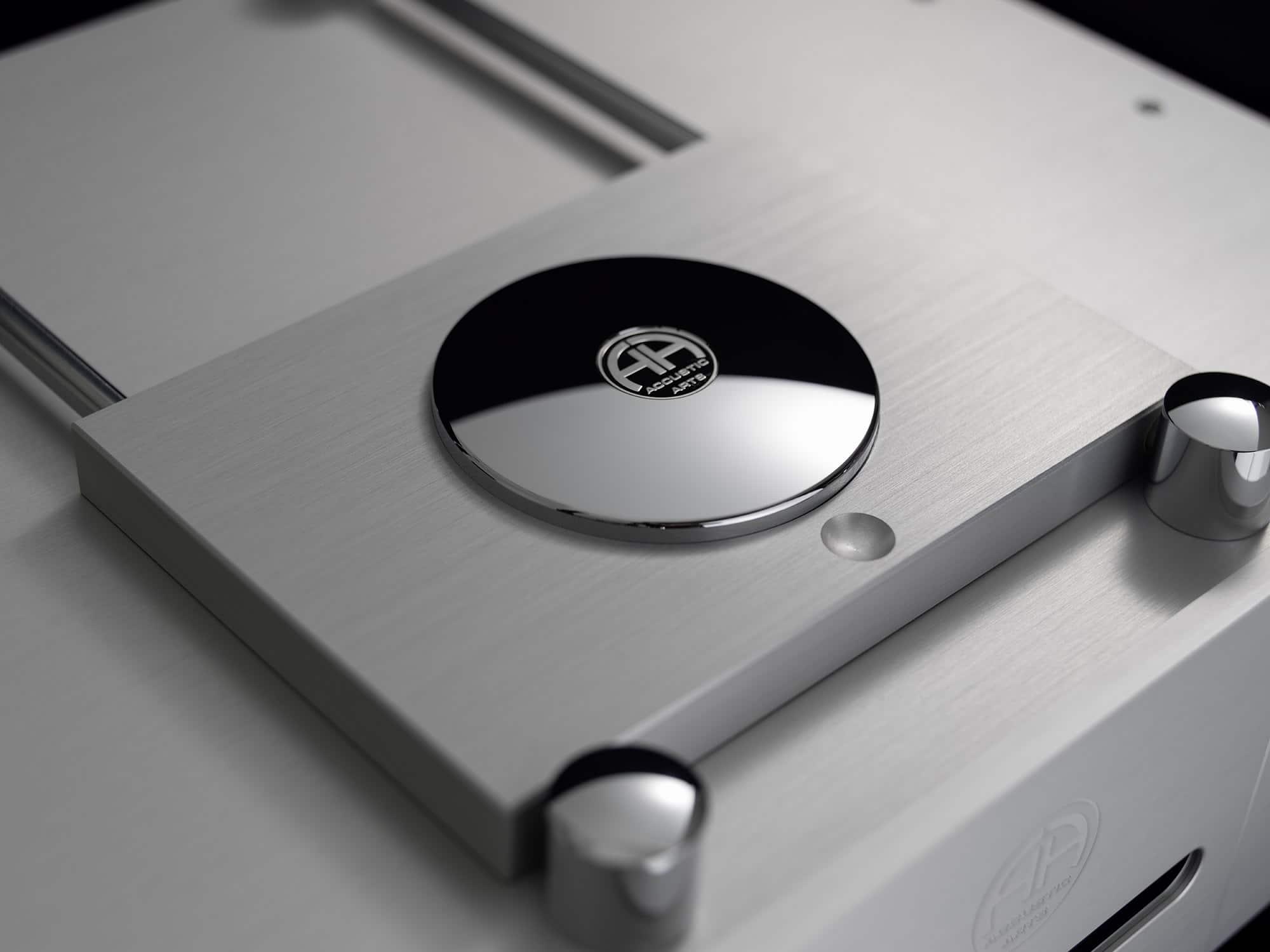
interests now lie or where they have been taken. The proof for you will be in the playing and the listening.
However, if I were to stop there, I would do disservice to its truly exceptional DAC and decoding/upsampling capabilities. Its CD playback bettered the ROON Nucleus Plus/ Tambaqui streaming combo. However, the Player II’s DAC going toe-to-toe with the Mola Mola Tambaqui with both using the ROON
depth, great width, and substantial height. Layering, separation and positioning are, well, outstanding. Further, the Player II boasts exceptional transparency and resolution which lifts copious detail, microscopic and otherwise from beneath the noise floor, all of which combine to conjure up an organic whole. The best analogy would be a crossover-less speaker’s ability to bring top to bottom, organic coherency—whole-cloth.
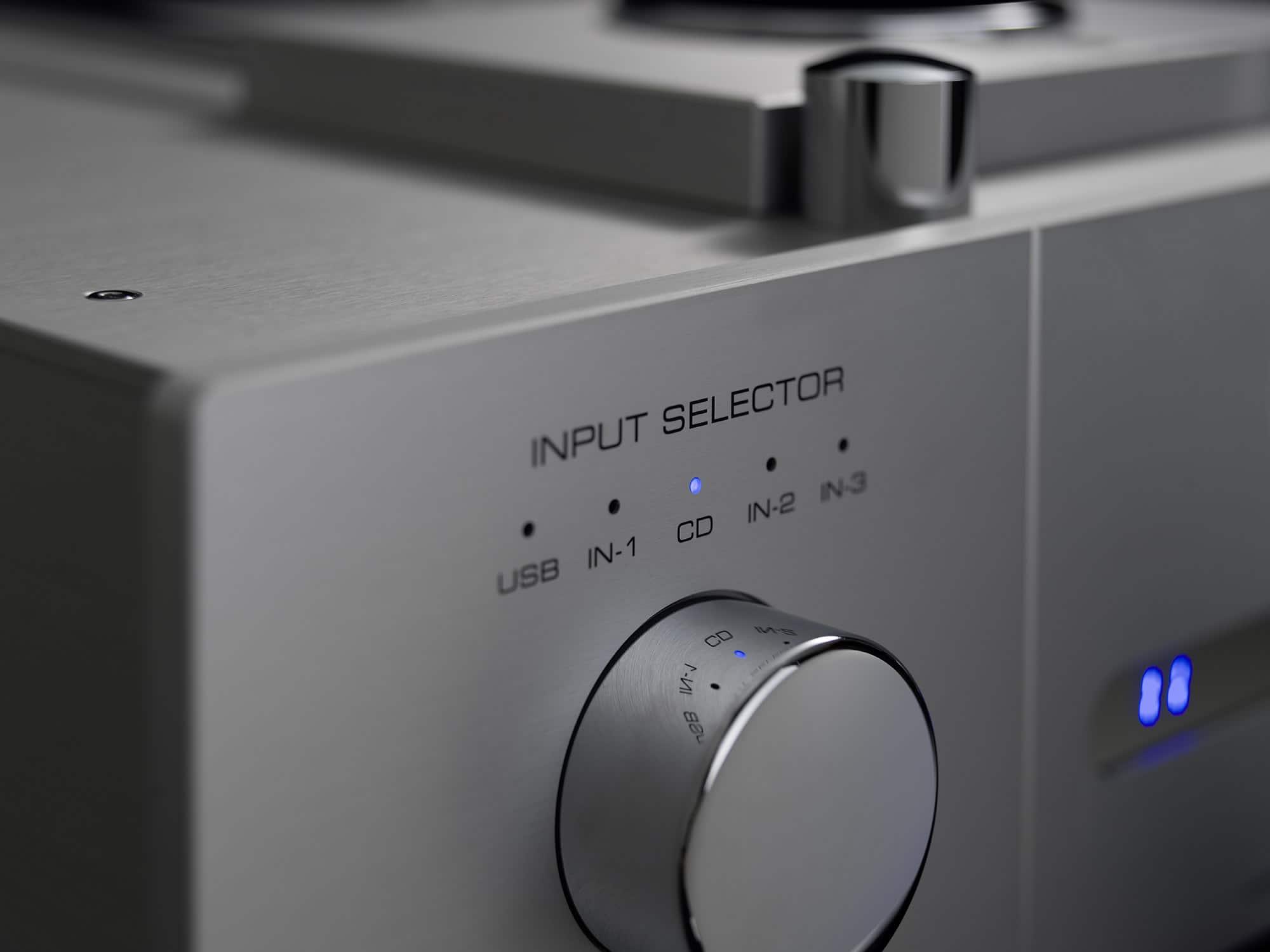
Nucleus Plus gave advantage to the Tambaqui. One imagines a TOTL frontend streamer— Grimm Audio MU1, INNUOS STATEMENT, Aurender W20SE, etc—if aligned to the Accustic Arts Player II would provide a much different outcome in regard to streaming.
The Accustic Arts Player II’s volumetric cube—its soundstage—is vast with cavernous

The Accustic Arts Player II was paired with the Roon Nucleus Plus, LTA Z10e HPA /Integrated, and the Viva Audio Egoista STX HPA (review coming). The headphones used were the STAX SR-009S, Meze Empyreans, Meze LIRIC, ZMF Véríté, ZMF Atticus, ZMF Atrium, and Rosson Audio RAD-0. Wires. Cabling throughout were Audience’s Front Row Cables (review coming) and power was RSX Power8 with the RSX BEYOND AC Power Cord and the TORUS RM20.
NOTE: The same tracks that were used to review the PS Audio SACD Transport/DAC combo were used for the Accustic Arts Player II to discern their respective rendering abilities. Again, there was no in-house streaming combination that bested the Accustic Arts Player II in CD player mode for the careful resolution of voices, making clear lyrics that had, to date, been guessed at!
At the present time, my apartment is 250 feet, perhaps a little less or a little more, from the Minnesota Symphony Orchestra. It is, of course, where Eiji Oue’s Stravinsky album was recorded by Reference Recordings. This recording has been, for some time, my go to, to understand sub-bass and bass reach, resolution, and the detail liberating abilities of a given component. Further, the album as a whole has allowed for the determination of speed and cohesion of dynamic shifts, of transient speed, and staging. As I know it so well and use it consistently (along with a few other bass rich albums), determinations are made quickly regarding components.
Eiji Oue’s “V. Infernal Dance of King Kashchey” (Stravinsky, Reference Recording) begins and there is rumble and anticipation, power and thunder that reaches deeply into the sub-bass depths and that takes no prisoners. This alone sets the Accustic Arts Player II far above even that of the PS Audio PerfectWave CD transport combo recently reviewed. And, again, no streaming/DAC combination available in-house came close to delivering a similar performance. The Player II has a weight that extends across the frequency spectrum providing gravitas, flesh and
palpability, while never obscuring resolution or detail. And there was that ease again. The lowered shoulders, exhaled breath, defurrowed brow often conjured by a good analog rig—turntable—as the Stravinsky album plays through. Obviously, it takes time to perfect a given format and the Player II is the result of just such a process.
Shirley Horn's “Beautiful Love” (You Won’t Forget Me, Verve) is yet another of my favorites for discerning the abilities of a given component from CDPs to DACs to amps to speakers. There are things that must be gotten right—timbre/tonality of Toots Thielemans’ harmonica, sibilance free articulation and deep


microdynamic detail of lyric formation and articulation, phrasing, and delivery of Shirley’s voice. Else, this song is unable to engage or move or to evoke the 3D-realism it should. As “Beautiful Love” plays now, via the Player II, the timbral/tonal accuracy and richness of Toots Thielemans’ harmonica is spot on, rich, ethereal. Shirley’s voice is dimensional, crystal clear, nuanced, entirely free of sibilance, and lush with the microdynamic cues of words/ lyrics, phrases formed and released into the world most naturally. All boxes marked would see the Accustic Arts Player II quickly adopted into one’s loving home. “Prayer to a Guardian Angel” by Voces8 (Lux, Decca Music Group Ltd.), a recent favorite, is a glorious choral piece from this ensemble, in which tone, timbre, harmonies and technique are quite brilliant. Though it must be admitted there are sections where the lyrics have proved difficult to discern. In “Prayer to a Guardian Angel” the third line has, to date, been either entirely obscured or partially so, regardless of component ensemble. The Accustic Arts Player II, however, finally gave complete clarity to this second line and to its every word! A smile quickly formed that would not soon diminish. Of course, I had to repeat this experiment, which was again validated. Every word was clearly discerned in this line and each line thereafter. I have listened to this song for well over 18 months and this clarity was never the case before. And this
Dave Brubeck’s “Take Five” (Time Out, Columbia-Legacy) plays via the silver disc with an energy, weight, texture, and frequency gravitas via the Accustic Arts Player II that, again, no in-house streaming combo has matched. The punch of Joe Morello’s bass drum boom comes with a tautness and energy and immediacy that says “true-that.”
Meanwhile the cymbal licks, the hi-hat crashes, rise air-infused and detail rich with a clarity and resolution that, once again, the in-house streaming combos could not match. And Eugene Wright’s bass has never been clearer, more definitive, and better resolved. At this point, the Player II was just showing off with prodigious skill, as to why CD playback is alive, well and challenging ALL formats. The PS Audio SACD Transport/DAC combo got me started and excited about the possibilities of CD playback, but the Accustic Arts Player II has moved things to a quantum level above it. That the Player II’s DAC section is second only to the Mola Mola Tambaqui ($13,500), our Best
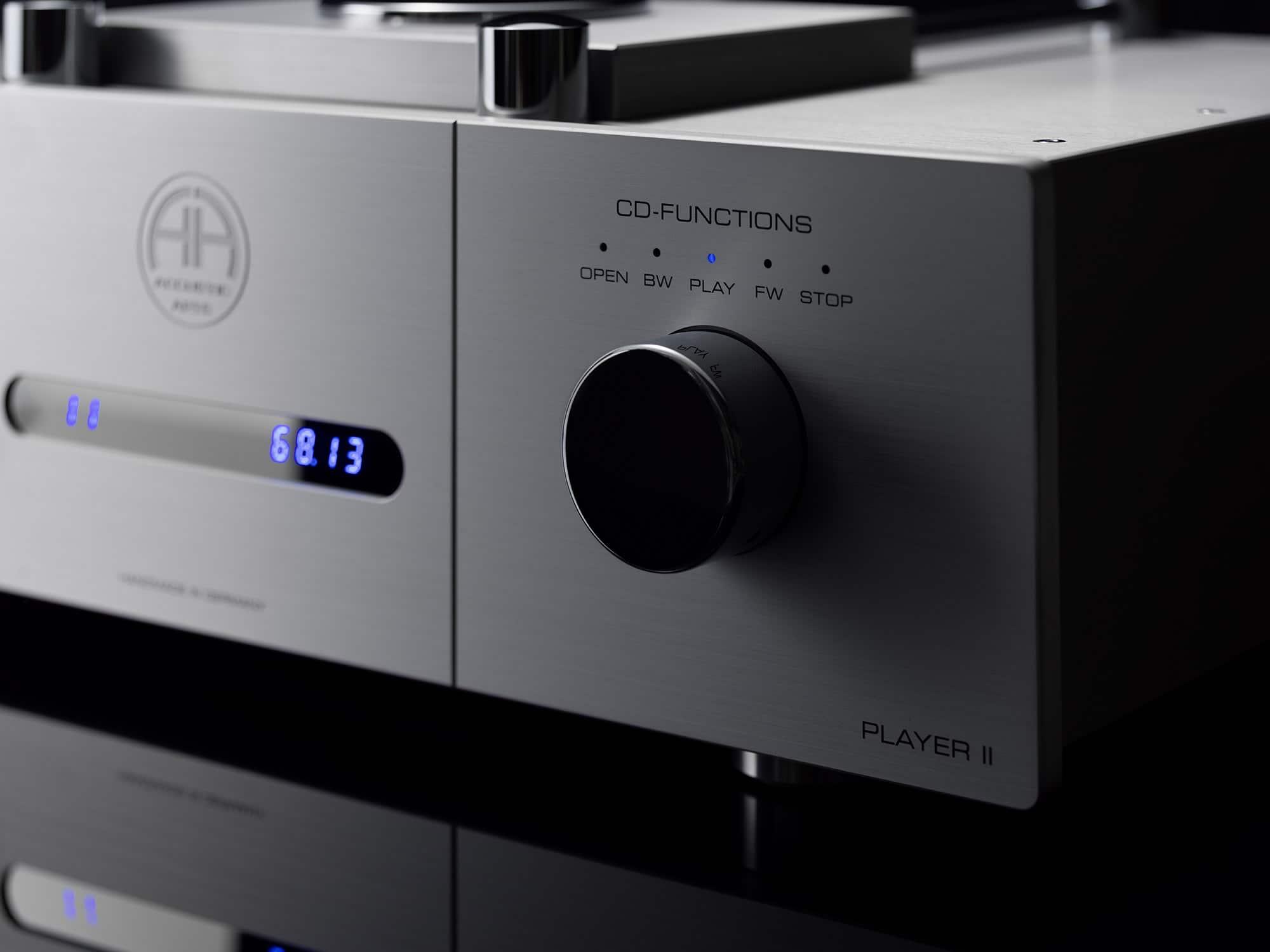


of the Year for 2021 product, speaks volumes. In the review of the PS Audio SACD Transport/DAC combo, I likened its playback to, “Like triple chocolate cake and a Rutherglen Muscat (Campbells Merchant Prince) after a fine dinner.” The Accustic Arts Player II would then be a six course meal at the former El Bulli’s (Catalonia, Spain), with the appropriate wine, of course. Suffice to say, that the Accustic Arts Player II’s talents are formidable.
Formidable. The Accustic Arts Player II rendering of CDs bested its streaming counterparts and even higher resolution versions of the same CDs(!) time and time again, regardless of genre. And this came as quite the surprise. It is also preternaturally engaging and immersive, alive, dynamic, incredibly resolving, and, at the same time, the doppelgänger of analog. This being no small task for a ‘digital playback’ component. And it serves, beautifully, two worlds—CD playback and streaming.
As I mentioned earlier, one of the many sales of my equipment that I lament most is the Accustic Arts Transport/DAC combo. The experience, however, with the Accustic Arts Player II clears that memory and replaces it with a profound new experience altogether. Ahh, but this player, unfortunately, is well out of range, otherwise it would never be let go. Fool me once…
CD playback is back, alive, standing toe-totoe with ALL formats (while clearly bettering most), and, in this evolved iteration, it is better than ever. And with that, I, we, enthusiastically honor the Accustic Arts Player II CDP with our highest award, the DIAMOND AWARD, for cutting-edge-excellence in the rebirth of what was briefly thought extinct, dead, forgotten. Long live CDs!
Pros: Unparalleled playback of CDs which rivals even higher resolution streaming. An exceptional internal DAC that renders streaming in a transparent, detailed, and very musical way. Formidable build quality. Intuitive operation.
Cons: Expensive. Heavy.
Accustic Arts
Accustic Arts Player II ($22,500) www.accusticarts.de/en/


 Vincent Van Gogh - Women Picking Olives, 1889
Vincent Van Gogh - Women Picking Olives, 1889


 By Oliver Masciarotte
By Oliver Masciarotte
The world of personal audio has moved in many directions since John C. Koss and Martin Lange invented the stereo headphone in 1958. Most of those changes have improved sound quality while making our listening more convenient as well. Bluetooth audio experience, we tweakophiles opt for wired ear or headphones and, to bring the electronics within arms length, savvy shoppers choose balanced cabling between source and amp. Toward that end, I bring you the killer combo of the $250 Geshelli JNOG2 digital–to–analog converter (DAC) and the fully balanced $220 ERISH2 headphone amplifier.
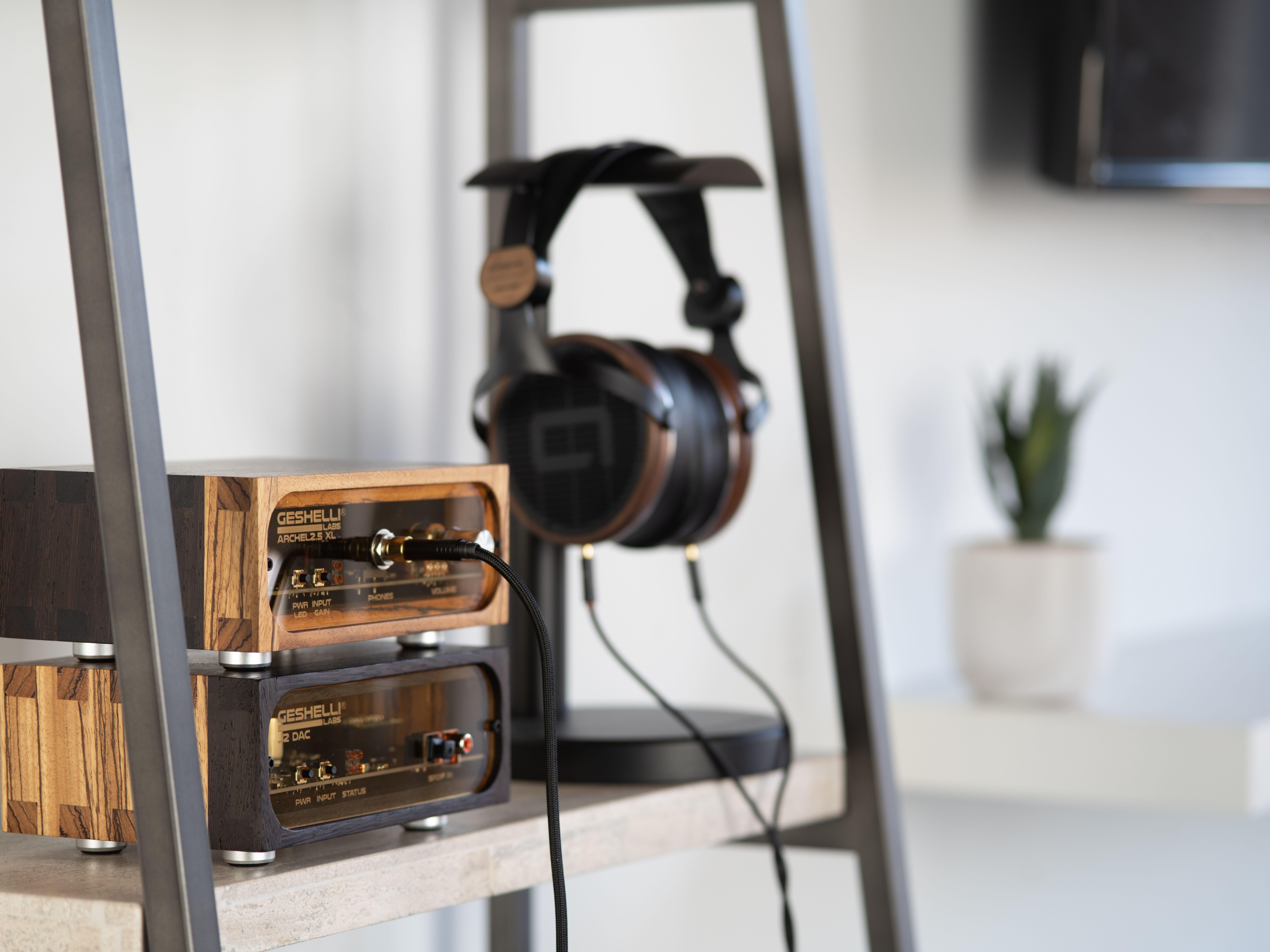
backgrounder, Sherri Geshelli told me that she and Geno started the company in their house. “When Geno was young, he always dreamed of owning nice audio systems like he would see in magazines. In 2016, Geno decided to try to make his own DAC…He worked on it for months before he was ready to show me. I was blown away when I heard it and encouraged him to make another to sell.” Hand soldered, in a plexi enclosure, a buyer loved it and told his friends. Initially assembling in their dining room, by 2018 they “…were busy enough to rent a garage with no air conditioning next to the train tracks. It was hot and loud but we were determined to make our company succeed.” Fast forward to today, where they are “…in a nice building, (with) two stencil printers, two full PCB assembly lines complete with reflow ovens, a wood shop, a powder coating shop and enough business to be able to hire both our kids and Geno’s dad. Geshelli is a true family operation.”

Geshelli Labs is a private, woman–owned company based in Florida, with three generations of the Geshelli family contributing to the enterprise. Product names all relate to family members. When asked for a
To keep costs down, the ERISH2 is opamp–based. Fancy operational amplifiers are built from discrete parts, and will run you around $40 per channel. Modern integrated “chip” opamps are excellent performers, and most cost a fraction of what you’d have to lay out for an equivalent discrete amp. The ERISH2 uses two $6 OPA1612 chip amps along with four single channel buffers. All four channels, two each for left and right, are handled independently to achieve maximum signal–to–noise ratio (SNR) and minimum distortion + noise specs (THD+N), “basically at the limits of the opamps,” Sherri Geshelli told
 Wassily Kandinsky - Munich Before the City
Wassily Kandinsky - Munich Before the City
me. The ERISH2 develops a hefty 2 Watts of power per channel, enough to cleanly drive even difficult loads.
Buyers have a wide choice of case and
not to allow any “house sound” to weasel its way into the product.
Remember I mentioned “four channels”? One of the many things I love about the

fancy SABRE ES9038Q2M 2 channel monolithic DAC chip with the $50 additional Amanero USB input module. These days, I largely rely on USB rather than an AES/EBU digital input. The JNOG2 comes standard with AES-3 unbalanced and optical inputs. Before The Fire‡, Geshelli exclusively used AKM. To their ears, AKM chips are the most neutral and colorless they have found. After The Fire with AKM parts unavailable, Geno redesigned the DAC with the ES9026PRO, then the ES9038Q2M. Once AKM availability eased, he redesigned the layout for AKM again so customers now have a choice of sound signature or lack thereof. Geno tries very hard
the amp nearby. You <em>did</em> purchase a minimum–length USB interconnect, didn’t you? Next to the appallingly poor jitter performance of a POF (Plastic Optical Fibre) TOSLINK cable, USB is stellar but that don’t mean it’s robust. Like me, good things come in short packages and passive USB cables should be kept as short as possible to maintain solid signaling integrity. Okay, back to balanced analog…Since a DAC usually stays snuggled up to your digital source via that minimal length USB connection, it’s noice to have your headphone amp close to your comfy listening chair. A balanced connection is far more immune to induced radio frequency noise that

an unbalanced link, which means a 15 foot run of high quality wire won’t incur significant high frequency loss or noise pickup. Another aspect I enjoy is the look. Cosmetics are important; nobody wants an ugly box polluting their living space, and the Geshelli combo has a fun, cozy aesthetic, with their dovetailed cabinetry and peekaboo front and rear fascia for the wood option. A young adult visitor to our darkened living room specifically gushed about the magenta internal illumination I had chosen…Oh, didn’t I mention? Both units have six user selectable colors plus off and white visible through the clear acrylic fascia option; mix or match mood lighting between your DAC and amp.
To begin my listening tests, I chose the one headphone I had that included a unbalanced TRRS plus an XLR-4 balanced cable set; Meze’s fantastic Empyrean. At $3k, this is more than a bit of a price mismatch but at least the cans were not the weakest link in the testing chain. Once that choice was made, I performed a quick sanity check: does the Geshelli combo outperform my MacBook M1 Air’s headphone jack? Yes it did. In terms of bandwidth, clarity and mid-bass solidarity, the Geshellis won. Now it was time to muck about in the weeds…
I could jump back and forth between the very flat, brutally honest character of the LCDs, and the fuller, more romantic rendition that the Empyrean offers. On Tyshawn Sorey’s album

To get a better sense of the Geshelli fingerprint, I needed to divorce the electronics from the transducers. As it turns out, the Empyrean shares a connector configuration with my $2k Audeze LCD-3, another planar magnetic, circumaural design. Because of that,

his regular knack for exceptional composition to uniquely explore other writer’s work. His version of the 1948 Ellis/Frigo/Carter standard, Detour Ahead, displays Sorey’s spare and tasteful drumming as it propels Aaron Diehl’s keys and Matt Brewer’s bass to a calming, contemplative conclusion. Via a well–defined, realistic soundstage, the Geshelli combo transmitted not only each instrument’s timbral contribution, but the intimate and completely plausible acoustic space created by engineer Aaron Nevezie. No piano the size of Newark here, folks!
At about the same price as Geshelli’s JNOG2 is Clarus Cable’s CODA, a DAC and
HPA tucked into a rectilinear extruded aluminum case the length of a lipstick. The

each other, the Geshelli combo consistently delivered a more spacious soundstage with a better balanced tonal character. Of course, you’d expect more from two mains–powered separates and you’d be justified. The Geshelli dropped me into the room that the Buena Vista Social Club band were playing in on the 2021 re–release of their pioneering acoustic Latin jazz album [Qobuz 96k]. On the third cut, El Cuarto de Tula, listen to the room microphone pickup of horns and percussion. There’s a short slap echo and beautiful liveness that close mic’ing would not capture.
The evocative motion picture soundtrack for Where The Crawdads Sing [48k Qobuz] sent me into a wistful funk, picturing bygone green afternoons and evening cricket choruses in the Appalachian Mountains. The album was recorded on the Newman scoring stage at 20th Century Fox Film Studios, according to Stephen Marsh, the project’s mastering engineer. Marsh mentioned via email that the “…Atmos (version) should be up any day now,” but I listened to the stereo mix. The bluegrass–inspired cue titled “Mussels For Jumpin’,” though clearly synthesized in post from mostly close mic’d tracks, still painted a warm, charming and convincing portrait through both the Empyrean and LCD-3 headphones. Thanks to the Geshelli pairing, the many stringed instruments all sat in the mix without becoming a tangle, and the pick sounds near the track’s end were cleanly rendered.
I thought one final comparison was in order; Sony’s PHA-3 mobile DAC/HPA. A used version of that unit costs about the same as the Geshelli combo, so I gave it a try…On the 2022 Hampton Hawes release “Four!” [Qobuz 192k], both electronics rendered an exceptionally wide soundstage though the PHA-3 did a slightly better job in that respect. The Sony’s low end was slightly less powerful and the top was a touch darker with a pleasant smoothness. The Geshelli combo traded refinement and delineation of individual instruments for marginally more subjective detail.

 Edward Hopper — Cape Cod in the Morning
Edward Hopper — Cape Cod in the Morning
 Wassily Kandinsky — Upward 1929
Wassily Kandinsky — Upward 1929

Some audiophiles love MQA. When done right, I’m part of that crowd. MQA is a two step process. The JNOG2 cannot perform the final “unfolding” or decoding of an MQA stream but better quality software players can carry out the first unfolding to 96k or lower. So, lack of MQA support is not as serious a shortcoming as one might think. Even if your player or streamer can’t fully decode MQA, you get the benefit of their temporal correction, baked into every MQA file, that renders a usually subtle improvement in transient response. For this review, I stuck with Qobuz as I was in the middle of evaluating their new curated releases. If you’re a Qobuz subscriber, you can play along; my “OMas” playlists are all public. Also for this review, I stuck to Sonic Studio’s Amarra, my hands down reference player application.
Disinterested in ostentation, Geshelli Labs believes in real world pricing with high fidelity performance. Their JNOG2 plus ERISH2 are a petite and potent bargain. With just enough character to put flesh on bone, the classy little twosome sets your music free without excessive color or dispensable features. Yes, you can spend more, far more, and will receive a tad more transparency or a huge clot of “character.” Mostly though, you’ll be able to admire blingy casework or glowing tubes. I recommend that instead, you opt for the glow of tiny LEDs and lovely, very affordable sound. Highly recommended.
‡ — On October 20, 2020, the Asahi Kasei Microdevices factory in Nobeoka City (Japan)
suffered a disastrous fire that burned in their “Fab2” semiconductor plant uncontrolled for three days. According to AKM, the aftermath created “…supply chain interruptions for many end-products including, but not limited to, analog‐to‐digital and digital‐to‐analog converters (ADC and DAC chips), TCXO and XO Oscillators…and various other electronic components used in pro audio…applications.” Company information:
GESHELLI LABS
GESHELLI ERISH2 [E2] $219.99
GESHELLI JNOG2 [J2] $249.99
geshelli.com

 AKRM
AKRM



 By K. E. Heartsong
By K. E. Heartsong


There is nothing quite like the music which ushered us into adolescence, our teen years, our start as young adults on the road to adulthood. Or perhaps I’m projecting my experience onto the reader. I imagine I should make this more personal. I was, perhaps, a bit of an anomaly in that jazz is where I cut my preschool to early school ‘musical teeth’. This, I imagine, would have been anathema to most. My early teen years saw the embrace of classical music via my high school music teacher, who was a most passionate man when it came to opera and classical and choral music. It was clearly contagious for me, who had come to music early. My middle to late teen years saw a veritable cornucopia of musical introductions —Rickie Lee Jones, Stevie Wonder, Cat Stevens, Donny Hathaway, Kansas, Fleetwood Mac, Bill Withers, Joni Mitchell, Al Green, Marshall Tucker, etc.

I recently heard from a good friend that more and more folks are returning to the music of their adolescent, teen, and/or young
adult years and turning away from the current musical scene. It was a very timely comment, but then, she has always had a way with delivering that word, that phrase, that confirmation or revelation just when needed. I had been, for some time, deeply immersed in the songs, bands and jazz albums that had formed the foundation of my early musical journey, as the current musical evolutions had evaded my interest. Why? And what has made this return so tempting and so rewarding?
There were two reasons really. The first was that songs, even jazz movements, as validated, at times, by liner notes or subsequent revelations, were all or mostly all stories. Stories that connected us to a personal experience, to another’s experience, or that provided insight into love, life, a different perspective, a truth, a fantastical tale.
The Beach Boys’ “California Girls” was, well, an ‘experiential’, coast-to-coast journey, whereas Rickie Lee Jones’ “Company” spoke to the poignant loss and the heartfelt memories of that special love. And Donny Hathaway’s “Jealous Guy” provided a parallel to our insecurities catalyzed when we are deeply in love. Kansas’ “Dust in the Wind” was an existential story, a story of the ephemeral nature of life itself, beautifully sung. I imagine how a particular song and its story might now come to your mind too.
The second thing was that my stereo system of years gone by had not served me very well, as it had been lacking in both transparency and resolution, at the very least.
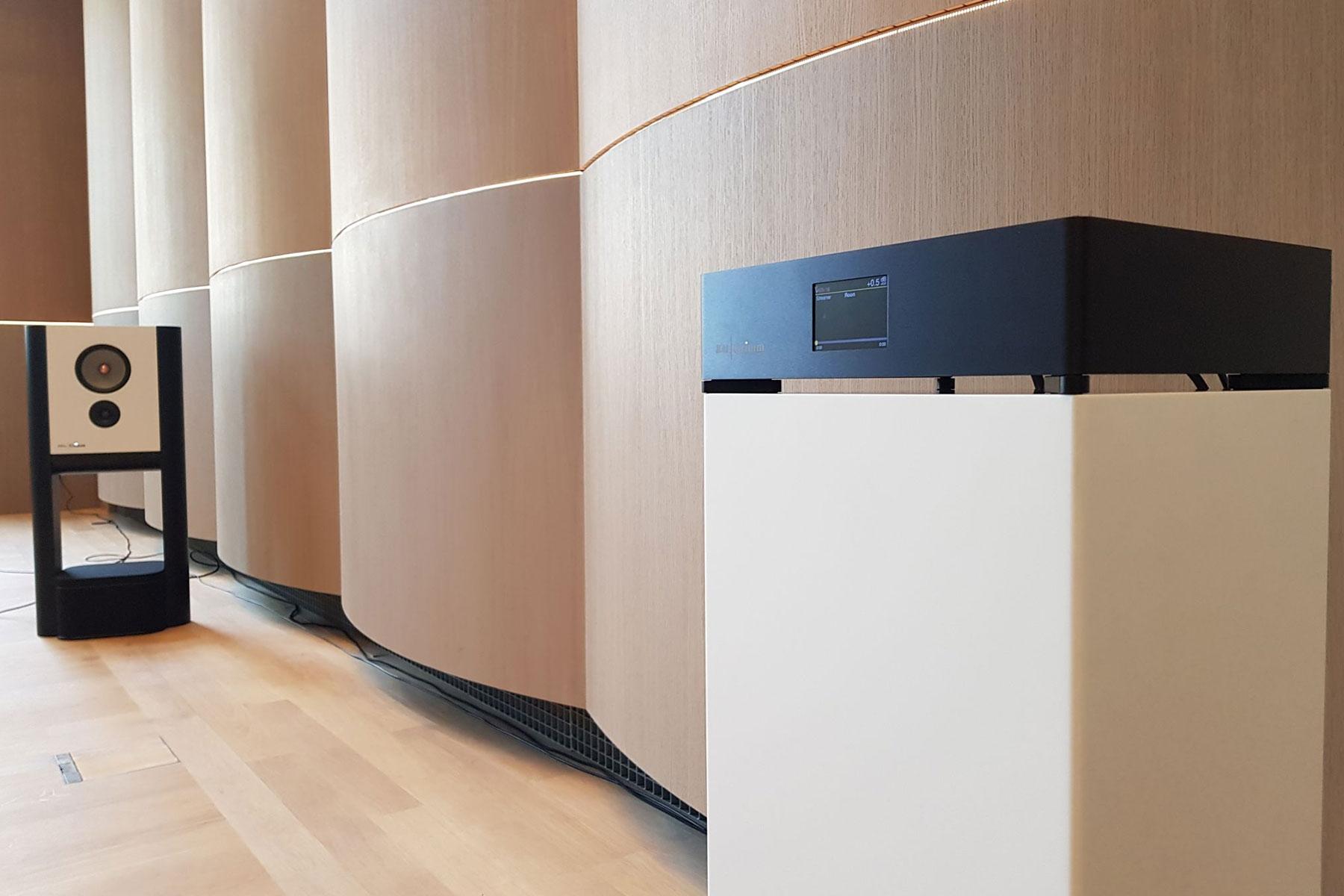

 Tamara De Lempicka — The Straw Hat
Tamara De Lempicka — The Straw Hat

Given my current experience with Hi-Fi, this painted my earlier systems as opaque given that I was unable to hear or clearly discern words, lyrics or phrases. And this had resulted in humming or mumbling my way through long known songs whose words I had never understood. Further, it was often difficult to discern the tone and timbre of various closely related instruments—violin, viola, cello, etc. Or, again, sometimes I would not hear musical instruments buried in the mix at all.
However, as I returned to these songs of long ago, the songs of my youth, I discovered a wealth of information being made clear to me by the march of technology in stereo and personal hi-fi systems. Now words, lyrics and phrases were being made crystal clear, while musical instruments that were previously buried deep in the mix emerged to take their rightful place, and, in this way, the new technology has brought new light and appreciation and love to the old and the various musical touchstones of my life. And this brings me to the review of the Grimm Audio MU1 streamer and its exceptional ways of revealing that music, all music afresh.
REFRAIN: Unlike most reviews, this review will be non-sequential, as it will start with how the headphones actually sound and not the process of physically “undressing” them and/or laying out their various parts, specifications, etc. Think of this
review then, as a non-linear movie—Memento, Kill Bill, Arrival, Eternal Sunshine of the Spotless Mind, etc—that, likewise, starts at the end and winds its way to the beginning.

The Grimm Audio MU1 streamer is easily at the forefront of technological progress and stands as testament to the fact that highfidelity musical reproduction is light years ahead of where it was just a few short years ago, let alone the days of my youth. But that is only half of the picture!
In truth, there was a time, not that long ago, when I doubted that wireless or streaming playback would soon or ever come close to challenging CD, let alone LP playback. Well, I have been proven wrong, at least in terms of ‘connected’ streaming. And the Grimm Audio MU1 has taught me that lesson in two most remarkable ways.
As a streamer utilizing the USB output to DACs—Mola Mola Tambaqui, Bricasti M1SE— the Grimm Audio MU1 is at the top of the streamer ‘game’. It is incredibly transparent, resolving, and able to pull, at depth, more detail than any streamer should have a right to. Its musicality is the hyper-simulacrum of fine
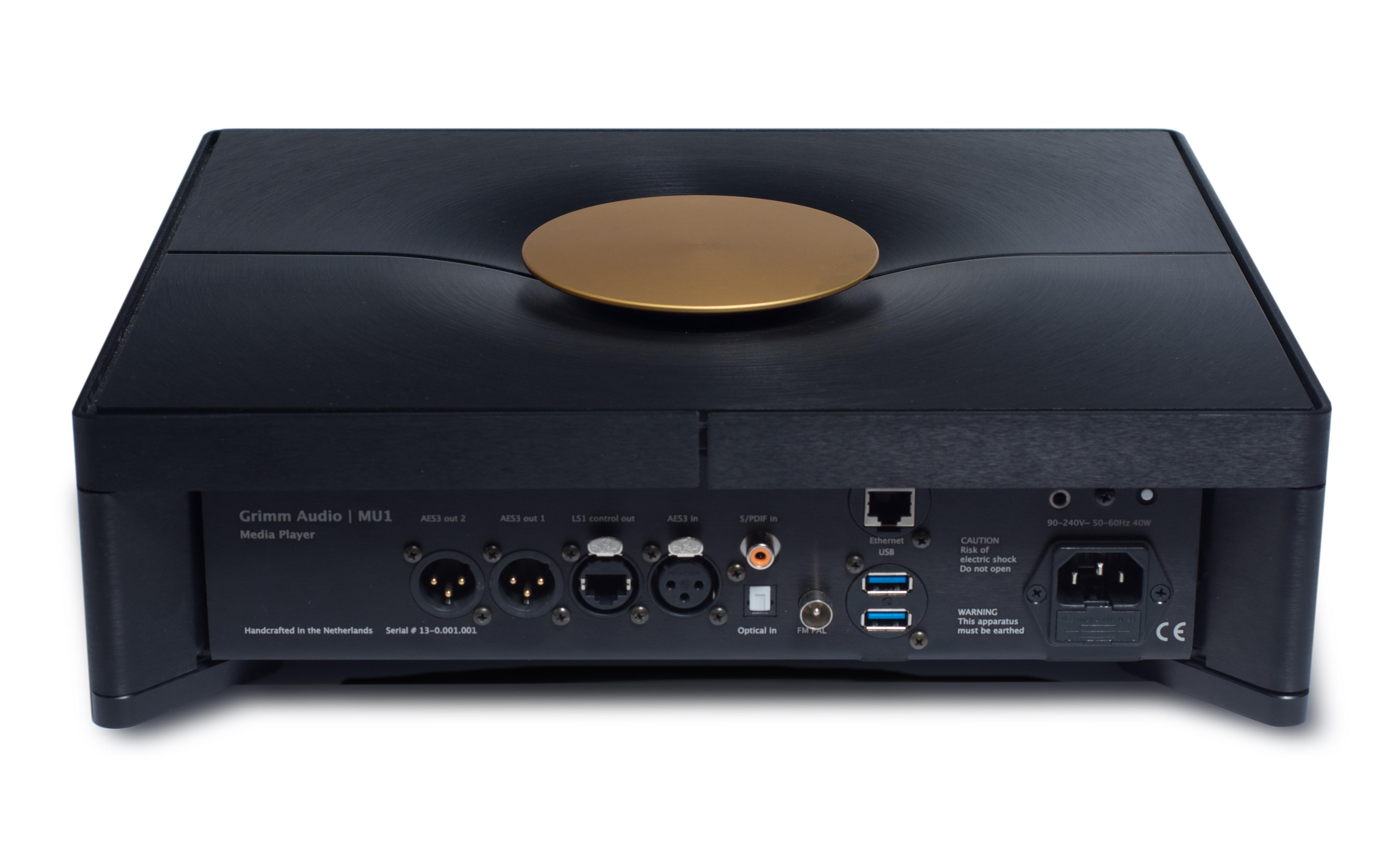
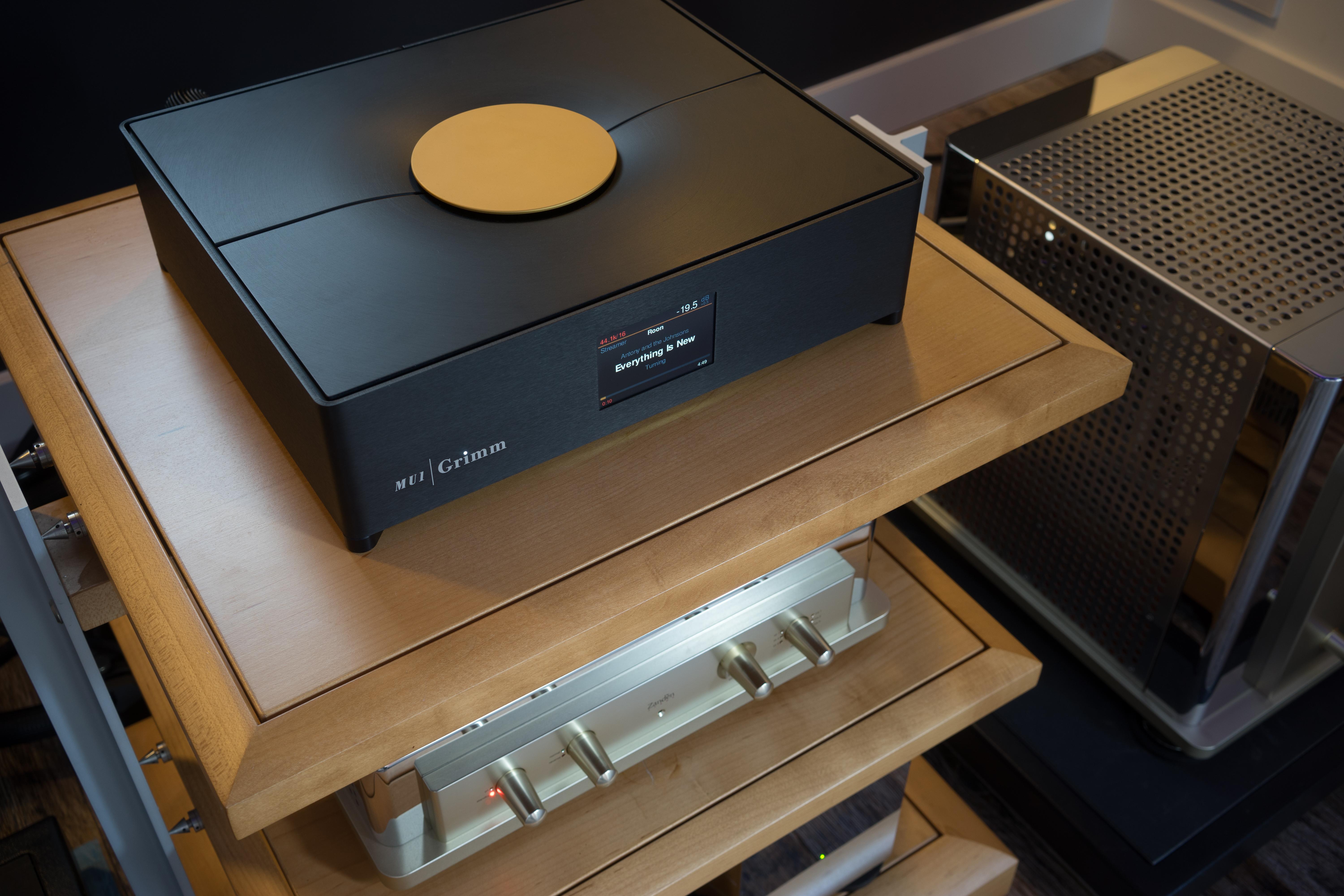


analog in its liquidity—the unrestrained flow of music, free from grain and sibilant nasties, while wonderfully coherent. And the Grimm Audio MU1’s low frequency signal to its mates, should they be up to the task, will guide them easily to the sub-bass strata.
However, when utilizing the Grimm Audio MU1’s AES/EBU output, which is the only output that upsamples to 24-bit/176.4kHz,
shores of the sub-bass region, the AES/EBU configuration can be said to have a second home deep in the sub-bass region, beside the Holy-Bass-Head-Grail. Suffice to say, that even headbangers will be well served via this configuration.
Further, the AES/EBU configuration unfolded nuance and refinement, a richness of timbre and tone, greater resolution and transparency, all in a way that should send shivers down the spines of its astronomically priced brethren. Did I mention the black-quiet background via this connection from which the music quietly levitated? Well, there’s that too. Yikes. Yikes. Yikes. Are we witnessing a Clark Kent versus Superman transformation here via these two outputs? I’m afraid so.
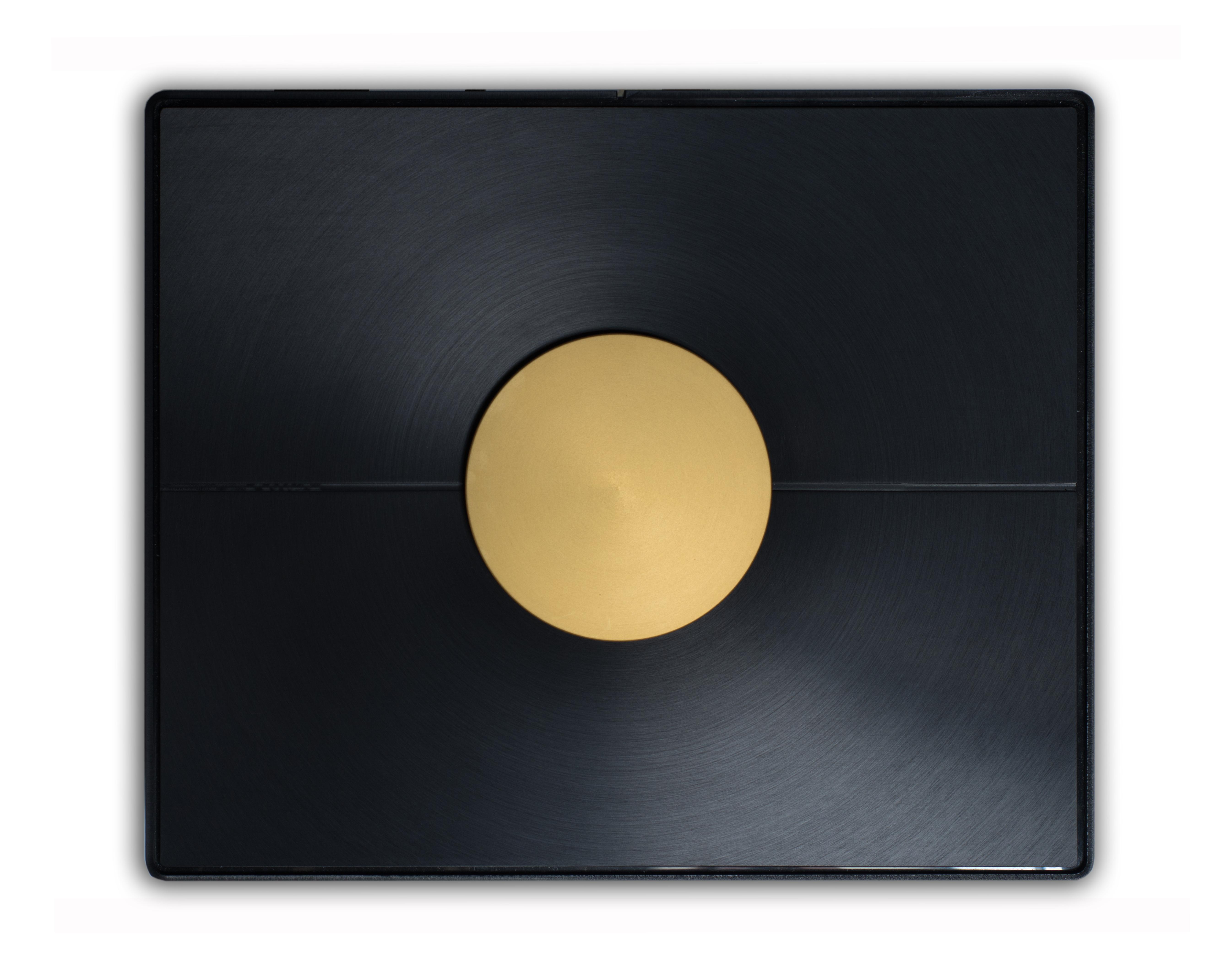
performance. There were many moments of jaw-agape, rapid-onset catatonia as triggered by the Grimm Audio MU1’s rendering of music via the AES/EBU. I scarce believe that there is ANYONE who can listen to these two configurations—USB versus AES/EBU—and not be able to clearly discern between them. Take this then as a dare.
In terms of bass alone, while the USB configuration travelled easily to the inland

The Grimm MU1 DAC’s volumetric cube— its soundstage—via the USB configuration with Mola Mola Tambaqui, Blue Hawaii Special Edition HPA\E—was quite deep, wide, and with very good height. Positioning—where performers are on stage—separation— the space between performers—and layering— relative depth of performers, across any given stage or orchestra or small cafe—were superb. However, flip the switch—select the Grimm Audio MU1 via the Roon menu, then select your DACs AES/EBU digital input (you’ll need to have an AES/EBU connection) and, relatively speaking, you’re in another world. The soundstage expands in all directions, literally. The various imaging criteria— positioning, separation, layering—are also much better established, the palpability, tone
and timbre, the gravitas and musicality all come together gorgeously.

“But why," you ask, is the AES/EBU so much better? Jitter. Let me explain that by way of an analogy.
Imagine a carnival ride. In this ride a person climbs into the apparatus or the three-quarter formed sphere. As the carney secures you in and closes the door, a lever is pulled. The carney then asks you to read the four word sentence before you. He records.
Immediately thereafter, the sphere with you in it begins to shake incredibly!
The carney with a wry smile points to the sentence. “If you can read this sentence clearly," the carney says, “with every word understood and in your natural voice, like before, this ride is free.”
You smile and attempt to say the sentence, but because of the shaking you are completely unable to issue a single coherent word. Frustrated, you say, “Thiiiiiis iiiissss nooootttt faaaaair.”
The carney smiles, nods, says “Okay,” and reduces the shaking of the sphere by half.
The carney now with a wide grin pulls a small tape from his jacket. He hands you two tapes.The first is your voice, recorded before the ride, reciting the sentence. The second is your proud final reading while being shaken almost imperceptibly by the ride. He plays it
You redouble your efforts and try again, but still you are unable to read the sentence with any semblance of normality.
The carney reduces again, by half, the shaking and then makes several more reductions, each time by half again. A smile on his face, while all the while you struggle. When you’re finally able to read the sentence with some semblance of normality, you smile.
“Jitter,” he says. “Imperceptible shaking affects the sound of your voice, and, most importantly, music playback, even when it’s barely perceptible to you or not perceptible at all.”
You nod. “May I have those tapes?” you ask.
The carney removes a manila envelope, places the two tapes in the envelope and hands it to you, a wide, ready smile on offer.
The reason then for the “why” of the Grimm Audio MU1’s daunting musical abilities via AES/EBU is the profound way that it seemingly stills/diminishes ‘jitter’ to some



subatomic domain with regard to music playback.

Eelco Grimm, founder and designer of Grimm Audio, provides a succinct reason for the AES/EBU’s spectacular performance:
“It is the extremely high performance/ oversampling of our proprietary FPGA board and our software.”
The Grimm MU1 Streamer was paired with the Mola Mola Tambaqui DAC, Bricasti M1SE DAC, Viva Audio Egoista STX\HPA\E, Blue Hawaii SE\HPA\E, LTA Z10e\HPA, and the Trilogy H1 Energizer\HPA\E (review coming). The headphones used were the STAX SR-009S, Dan Clark VOCE, Meze Empyreans, Meze LIRIC, ZMF Atticus, ZMF Véríté, ZMF Atrium, and Rosson Audio RAD-0. Cabling throughout was Audience’s Front Row Cables and AntiCable and power was the TORUS RM20 and Audience’s AdeptResponse.
BASS

Eiji Oue’s “Infernal Dance of King Kashchey” (Stravinsky, Reference Recording) cues for play and immediately I am reminded of the Enleum AMP-23R’s bass response which was nothing short of explosive, uncompromising, phenomenal! In a better,
of the AMP-23R’s bass response, but it is very good. The Grimm Audio MU1’s AES/EBU implementation, on the other hand, stands toe to toe, eye to eye with the Enleum AMP-23R’s bass response. Remarkable! As “Infernal Dance of King Kashchey” plays I am reminded of my discussions with a Minnesota Symphony Orchestra’s staff member, who told me that seven tympani had been assembled for this movement! Like the Enleum AMP-23R before it, the Grimm Audio MU1 via AES/EBU, the Mola Mola Tambaqui, and the Blue Hawaii Special Edition together match the prodigious bass of the Enleum AMP-23R (it too as allied to the Tambaqui). It should be said that while I rank the Blue Hawaii’s bass response very highly for an electrostatic headphone amp, it has no business matching the Enleum AMP-23R. Not to belabour the point, but while the Grimm Audio’s USB’s bass response was very good and brushed past the borders of the sub-bass region, it pales in comparison to the AES/EBU rendering of bass. This relative difference was consistent across all bass-rich tracks or those tracks that featured moments of sub-bass reach. Dave Holland’s “Emerald Tears” (Emerald Tears, ECM), Massive Attack’s “Angel” (Mezzanine, Circa), Marcus Miller’s “Power” (M2, Concord), Ben Harper and the Innocent Criminals’ “Beloved One” (Burn to Shine, Virgin), and others all had tremendous gravitas and palpability.

Harry Belafonte’s Belafonte: At Carnegie Hall (Live) (RCA-Legacy)




via the Grimm MU1 is brilliant from beginning to end. It is transparent, beautifully resolved, rich with detail, and incredibly musical. And therein lives its paradox. The spaciousness afforded this album via the Grimm MU1 relative to the Roon Nucleus Plus is wider still with images locked firmly in space and at greater relative depth: in other words the stage is ‘more’ Carnegie Hall. Tone, timbre, texture are natural, rich, intoxicating. It is a presentation that places it farther away from the neutral zone relative to the Roon Nucleus Plus, and while both are immersive, the Grimm Audio MU1 is even more so. The hour and thirty-six minutes has never passed by so quickly. I switch to AES/EBU and repeat. From the opening drum roll of “Darlin’ Cora” which is decidedly more pronounced, more potent, and more dimensional than before, to “Sylvie” to “Man Smart (Woman Smarter)” to the final song, the overlong “Matilda”, the album is more transparent, palpable, immersive and “best” is to be had on all counts. All counts. The rendering of Mercedes Sosa’s entire Misa Criolla album, and of a wide variety of songs such as Voces8’s “Agnus Dei” (Enchanted Isle, Decca), Al Jarreau’s “Dinosaur” (Tenderness, Rhino), and Shirley Horn’s “Beautiful Love” (You Won’t Forget Me, Verve) via the Grimm Audio’s AES/EBU output was, to a one, phenomenal! Full stop.
TREBLE+

I went into the treble part of the review with AES/EBU fully engaged and, in truth, didn’t look back. Yes, the USB output was very good
in pre-review listening, but by this point it was pretty clear what output I preferred. Dave Brubeck’s “Take Five” (Time Out, ColumbiaLegacy) sidles up and it is more alive, more dynamic, and the cymbals—crash, ride, hi-hats —more palpable and three dimensional with greater ‘shimmer’ than ever. Even the various drums and their skins and their inner volumes are better fleshed out and resolved. Additionally, the stage is broad, the players fixed within and at solid, relative depth. Timbre and tone are rich and enthralling. Hilary Hahn’s rendition of Bach’s “Chaconne from Partita No. 2 for Violin in D minor, BWV 1004” (The Essential Hilary, Sony Classical) begins and there is more weight, force and dynamics, which are wrapped around nuance, beautiful tonal shadings, and a sky-high silken treble. Her playing is impassioned, emotive, and the music continually tugs at the heart. It is a beautiful rendering made real via the Grimm Audio MU1 and its AES/EBU output, the Mola Mola Tambaqui, and in this instance the Blue Hawaii SE, though it has, at times, also been the Viva Solista STX, the Trilogy H1 Energizer (review coming), and the LTA Z10e.

The Grimm Audio MU1 operates beautifully across the various realms of its functionality. It is a Roon Core, equipped for ethernet and USB connections which allows it to stream music beautifully from one’s Roon library, attached NAS drives, or digital input devices. It mates beautifully with DACs not enabled with ethernet input or USB output—old school—


and upsamples to 24-bit/88.2kHz (2x) or 24-bit/ 176.4kHz (4x) via its AES/EBU output. It is an ethernet-connected source to Grimm Audio’s LSI active speakers and remote. It is an exceptional transport (whether or not it is equipped with an internal drive). It incorporates via selected outputs—USB or AES/EBU—a “better” and “best” approach to rendering one’s music that is breathtaking. There is, perhaps, no aspect at which the Grimm Audio MU1 does not excel across its functionalities and collective voices—both “better” and “best”. It is supremely transparent, easily able to resolve the most dense passages, movements and songs, and it lifts prodigious amounts of detail, most especially via its AES/ EBU (4x) output. It is also natural and richly musical in a way that makes it compelling and immersive and fluid as if an analog rendering. There is also a gravitas or weight, if you will, that brings forth palpability—fully fleshed out/ real performers and performances. The Grimm Audio MU1’s combined strengths make it quite a formidable streamer.
Again, I count myself extremely fortunate to review such incredible components. Though this is not always the case: those components you will never read about in these pages are simply shipped back to manufacturer/ distributor, with explanation as to the ‘why not’ of the review. And said product is not mentioned again. We don’t do negative here. That said, the Grimm Audio MU1 wins deservingly our highest award for an exceptionally compelling and immersive musical experience—the DIAMOND AWARD.
Pros: A Roon Core and streamer of the highest caliber with extreme transparency and resolving capabilities, an almost preternatural ability to render as if analog, which translates to a natural, wholly engaging, and beautifully musical experience. Exceptional, direct and fast remote technical support!
Cons: Takes a minute to get up to speed. It is not inexpensive. And one must read the instructions thoroughly!

THE COMPANY GRIMM AUDIO BV
Grimm Audio MU1 Streamer ($11,400) info@grimmaudio.com

THE DISTRIBUTOR
Review sample provided by Analog Audio. — paulsales@analog.audio analog.audio

THE REFERRAL THE VOICE THAT IS Doug White contact@thevoicethatis.com thevoicethatis.com 610.359.0189
AKRM


 Paul Cezanne - Still Life with Peppermint Bottle
Paul Cezanne - Still Life with Peppermint Bottle


Welcome to AudioKeyREVIEWS Magazine Canada’s Recommended Components, which will become part and parcel of each of our various issues. The purpose of this section is to acquaint the reader with products—speakers, DACs, amplifiers, preamplifiers, turntables, headphones, IEMs, streamers, portable audio, etc.—that we feel are quite exceptional and rise above their like brethren. There will be three categories—Budget, Mid-Tier, and Top-Of-The-Line.
In our Budget Recommendations there will be products that compete far above their respective price point and are, generally, also built to reflect this.Our Mid-Tier Recommendations will encompass those products within arms reach, in terms of relative affordability, that present value and a challenge to the vanguard of their respective product niches. Finally, our TOTL Recommendations will be composed of those products that are at the cutting edge of technological advancement now happening across the world. The three categories of recommendations will rotate across the various issues of our magazine and there will also be a fluidity to the products within the various lists. Things change and especially now given our current technological epoch. The various lists, however, will be fixed on the AudioKeyReviews.com website.




 Mark Rothko - Red, 1964
Mark Rothko - Red, 1964
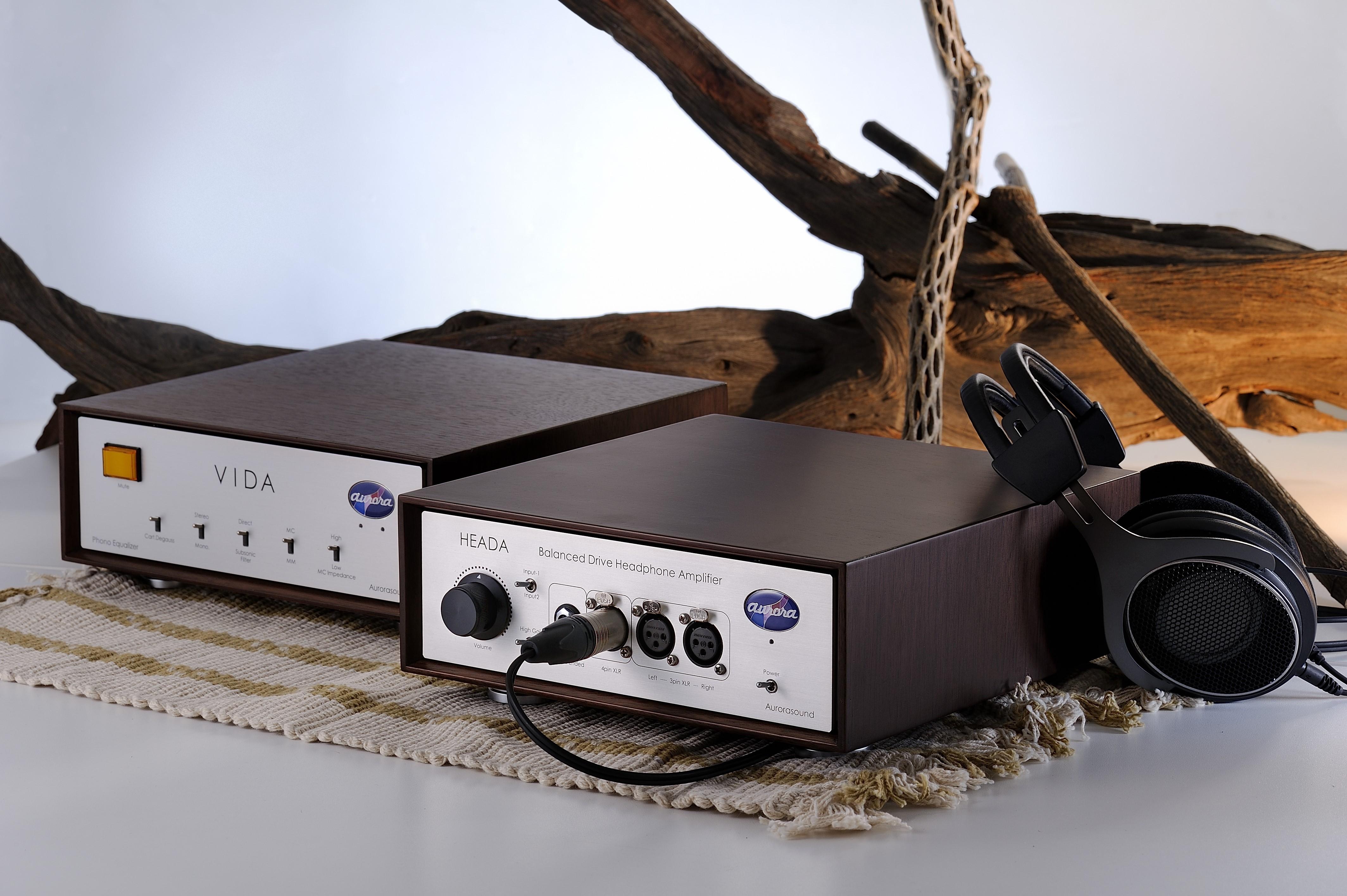

AURORASOUND HEADA $2999: If you’re looking for an endgame headphone amplifier and even if your headphone amplifier is more expensive, try this one, you may be quite surprised. That said, the Aurorasound HEADA headphone amplifier is a top echelon component and an easy DIAMOND AWARD winner.
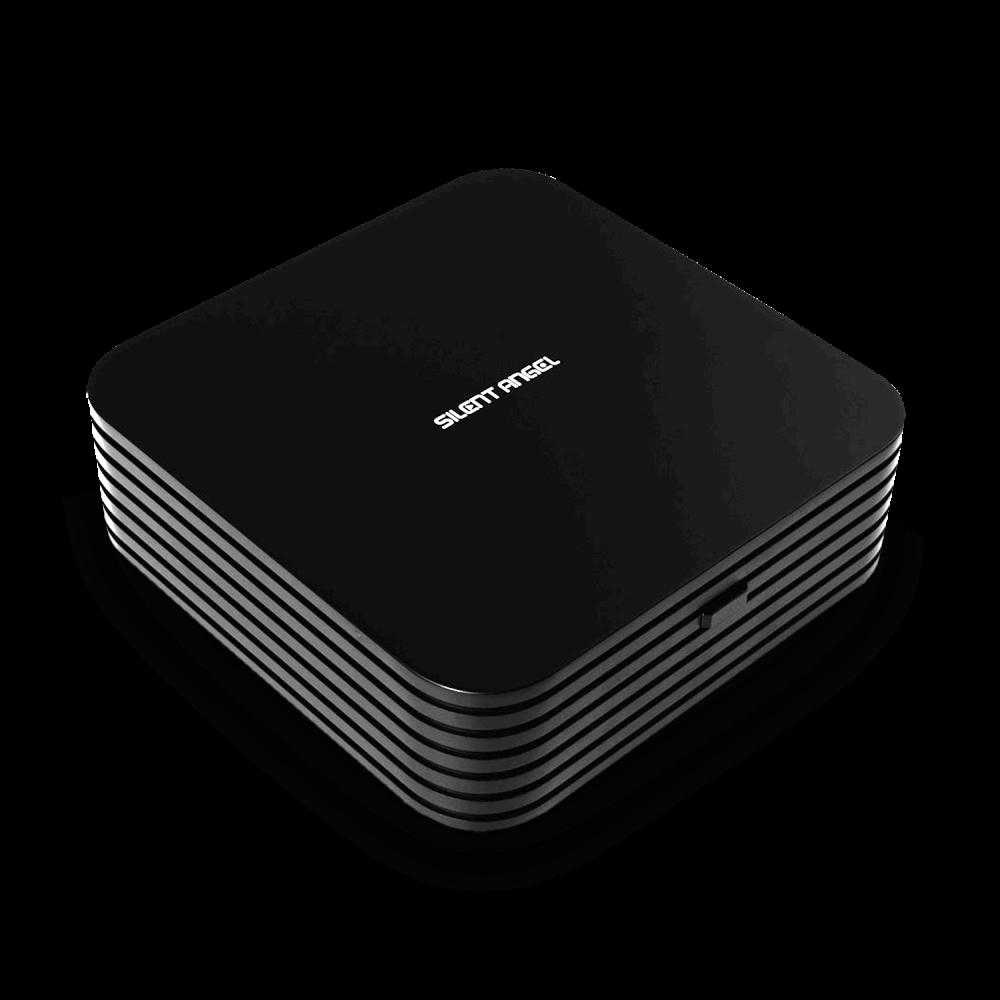
SILENT ANGEL RHEIN Z1 $2299: The Rhein Z1 and Forester F2 combo played far above the league that their combined price would indicate. For many, this $3,900 combo may well represent an endgame streamer/ power supply capable of exceptional fidelity with DACs from entry level to those on the cutting edge.

ABYSS AB1266 PHI TC $5999: I think that I’ve said it all. The Abyss AB1266 Phi TC is a phenomenal headphone. It brings an undying passion for musicality and a ferocity for transparency and clarity and detail retrieval, formerly the domain of the best electrostatic headphones. But this planar headphone speaks that language—electrostatic—fluently and well.






TORUS RM20 $3999: Can you say pristine, natural, open, and unhindered frequency response? Wide dynamic range? And there were oceans of detail, air, microdynamics, and ambience rendered by the Torus RM 20. It was not subtle. On the contrary, it was stunning.
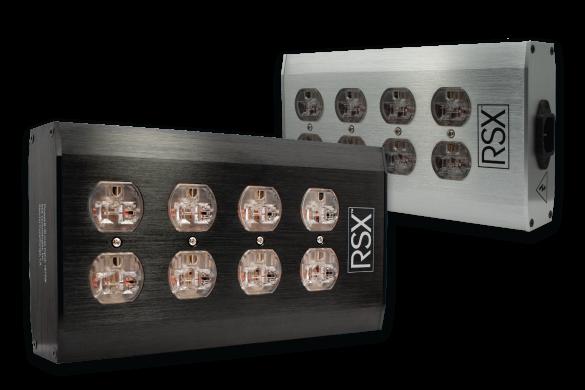
RSX POWER8 $399: The RSX Power8 clearly holds to the dictum, “Do no Harm,” to the system in which it is being utilized. What it, in fact, offers is pure, clean power, a testament to the meticulous parts selection, research, and conscious minimalism all employed in its design. suffice to say, that it has no competitors at 3 to 4 times is cost.

GESHELLI LABS ERISH2 [E2] $219.99, JNOG2 [J2] $249.99: Disinterested in ostentation, Geshelli Labs believes in real world pricing with high fidelity performance. Their JNOG2 plus ERISH2 are a petite and potent bargain. With just enough character to put flesh on bone, the classy little twosome sets your music free without excessive color or dispensable features.




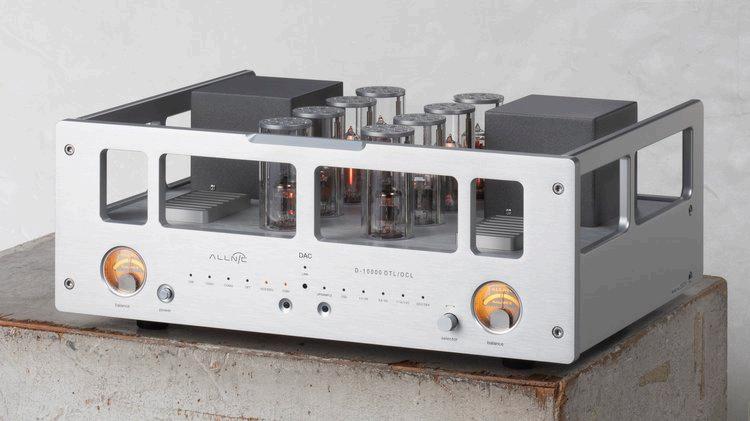
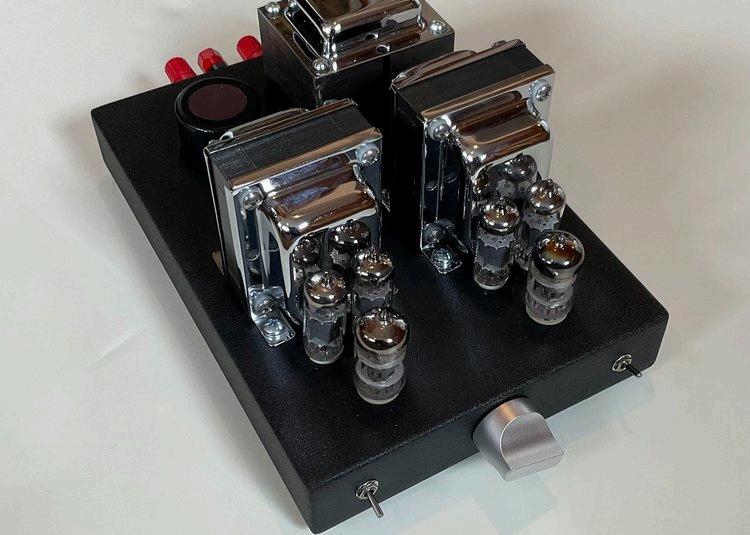


ALLNIC AUDIO D-10000 OTL/OCL DAC
ATMA-SPHERE THE GEM INTEGRATED/HPA
BOENICKE W11 LOUDSPEAKER
ANTICABLE LEVEL 6 SPEAKER CABLE
AND other reviews, columns, interviews, videos, etc.



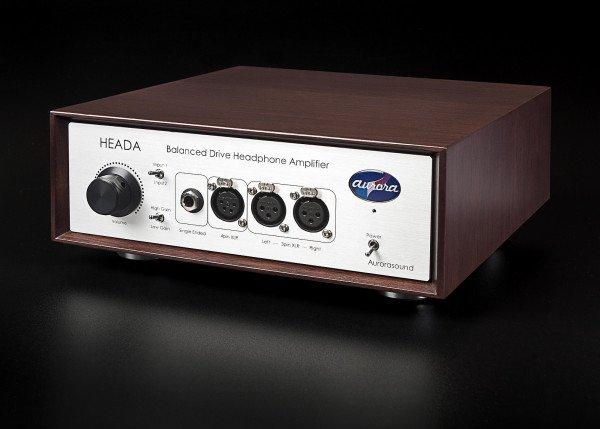
HEADA HEADPHONE AMP

 GRIMM AUDIO MU1 STREAMER
GRIMM AUDIO MU1 STREAMER

Music is art, art is music.
ABYSS HEADPHONES
ANTICABLE
AUDIO ART CABLE
AUDIENCE
BAETIS AUDIO
BOENICKE AUDIO
BRICASTI DESIGN
DAN CLARK
GESHELLI AUDIO
GRIMM AUDIO
GTT AUDIO
HEADAMP
HERMAN MILLER
HIGHEND-ELECTRONICS
KUBALA-SOSNA
LEMAY AUDIO
LYRIC AUDIO
MADLY AUDACIOUS CONCEPTS

MAPLE HIFI
MOJO AUDIO
MOLA MOLA
MYTEK
SILENT ANGEL
SONIC ARTISTRY
TORUS POWER
TRI-ART AUDIO
TRI-CELL ENTERPRISES
 Claude Monet - Tulsa Sunrise
Claude Monet - Tulsa Sunrise











